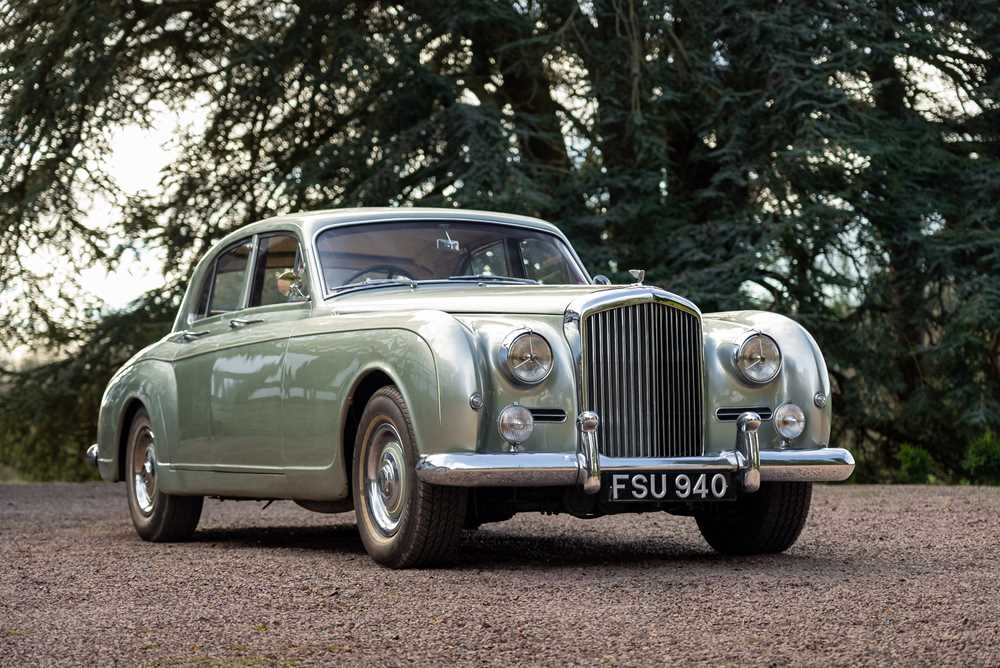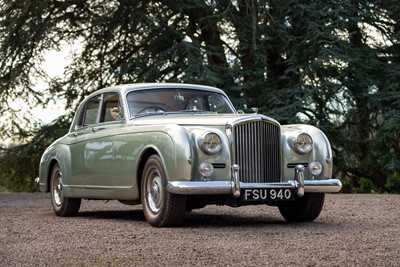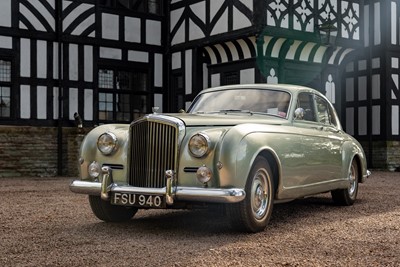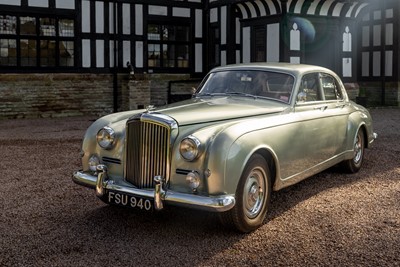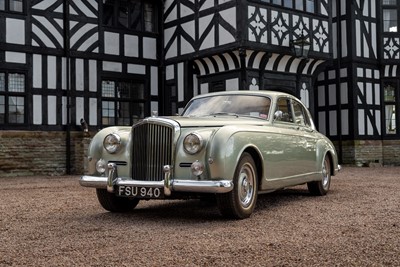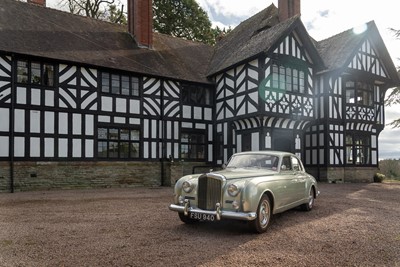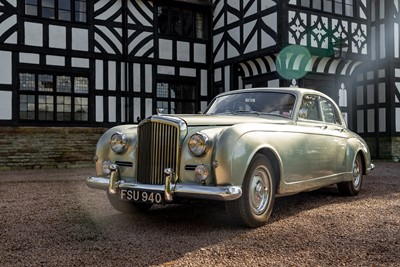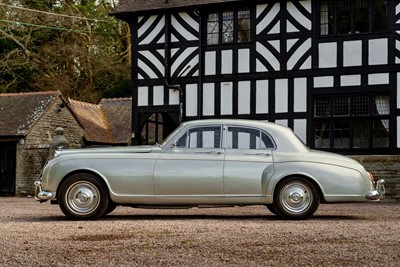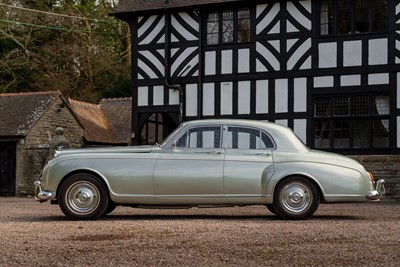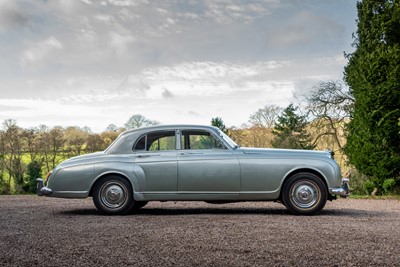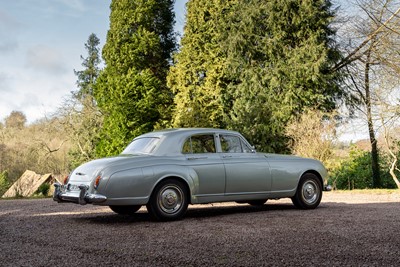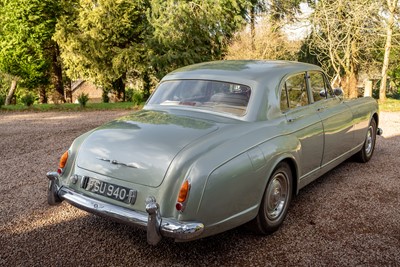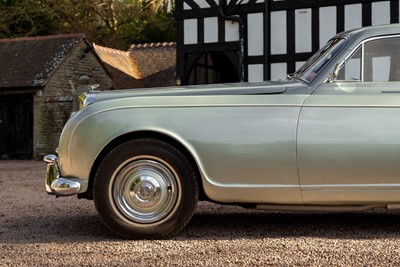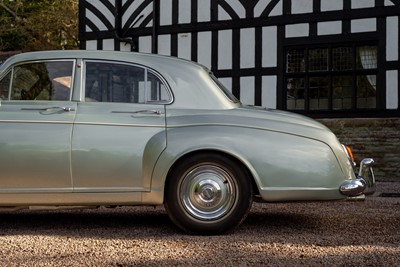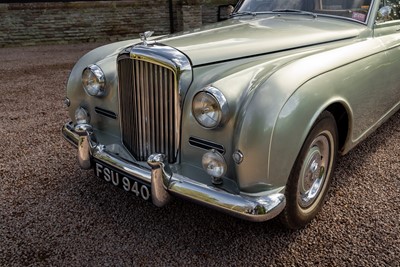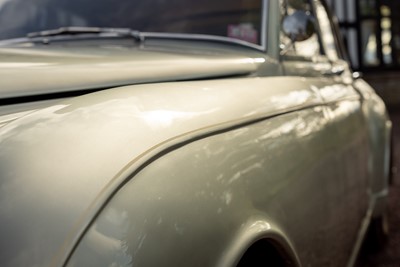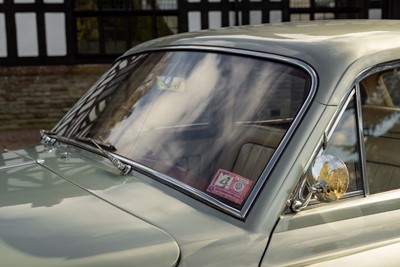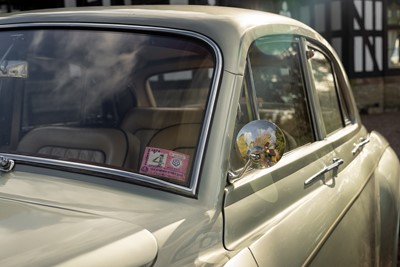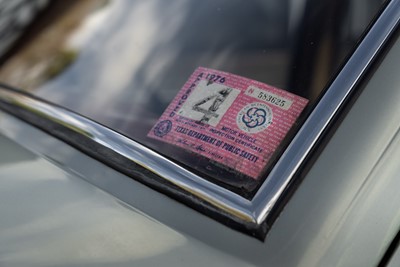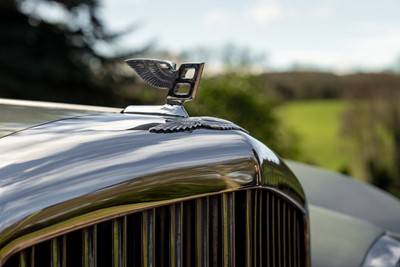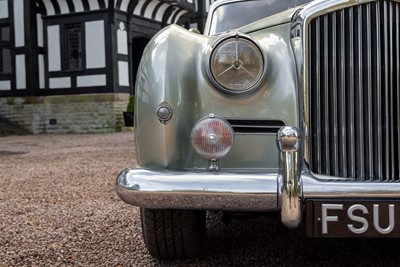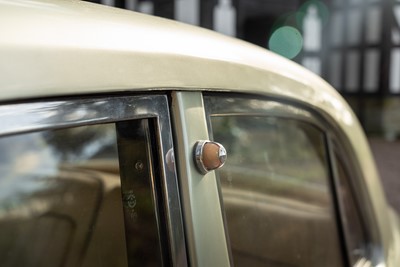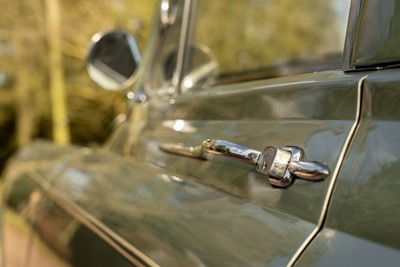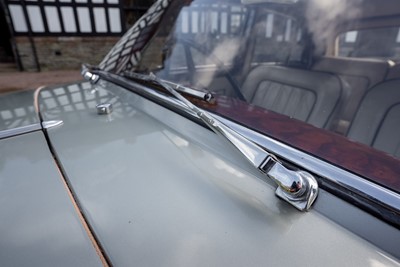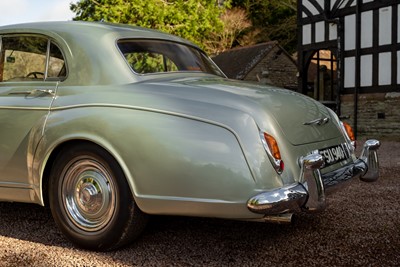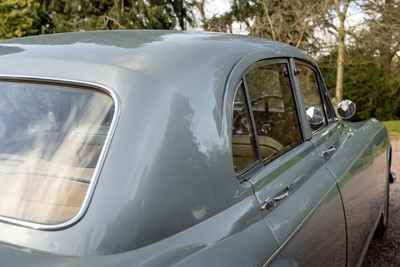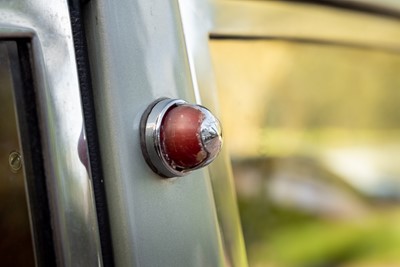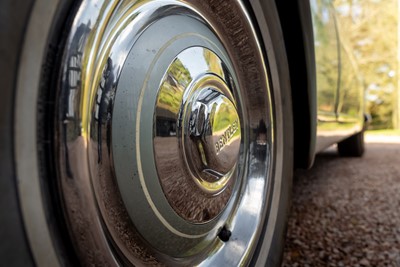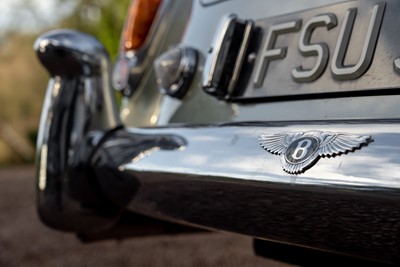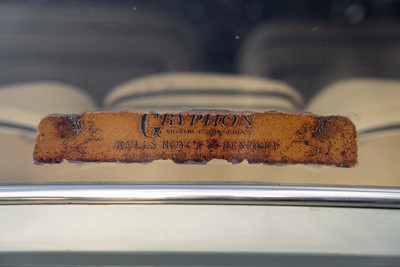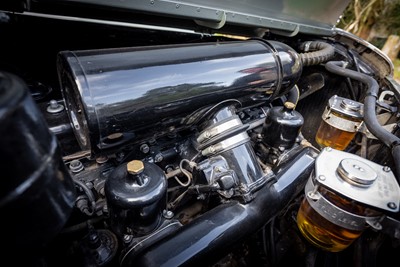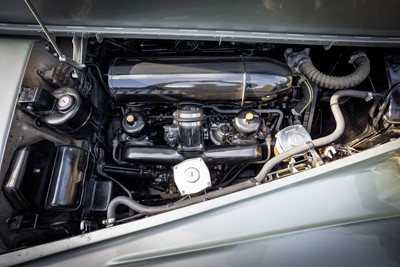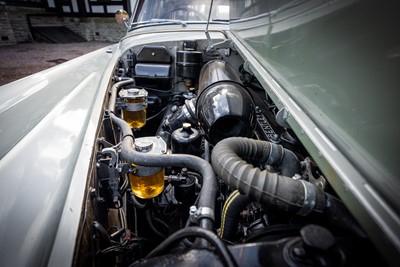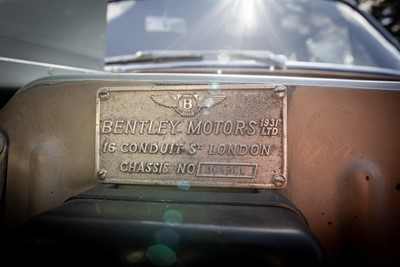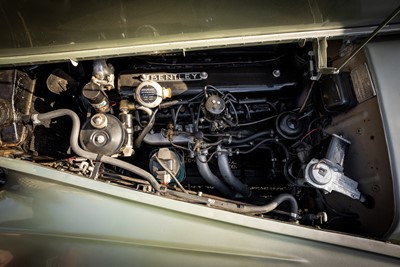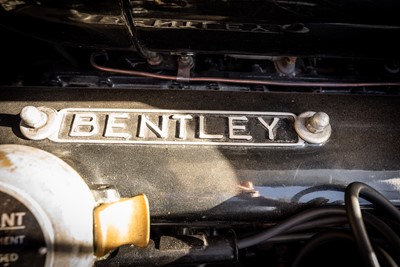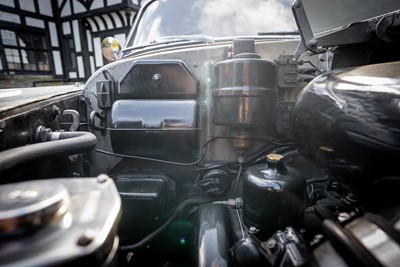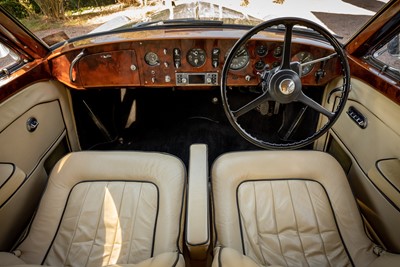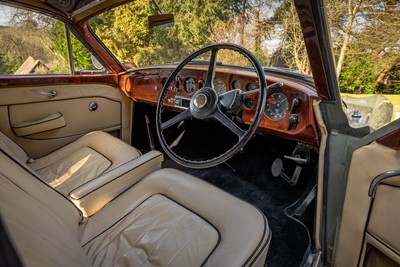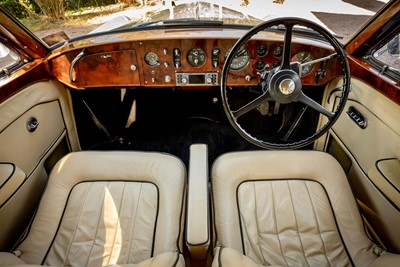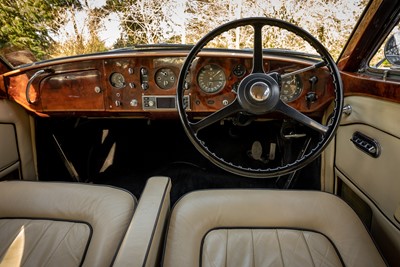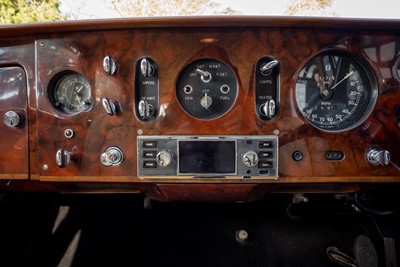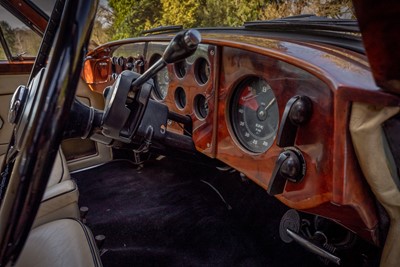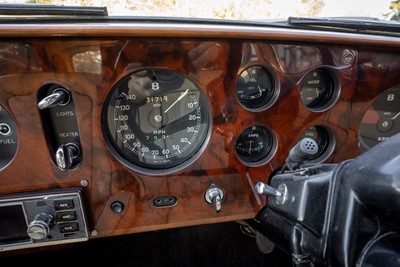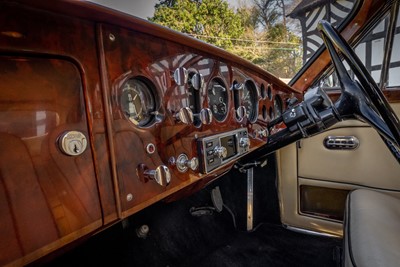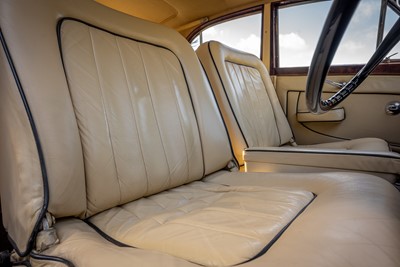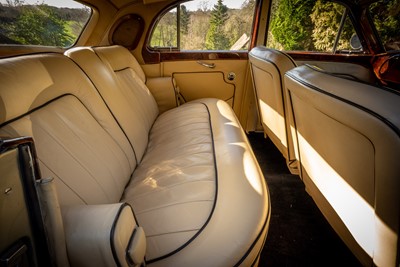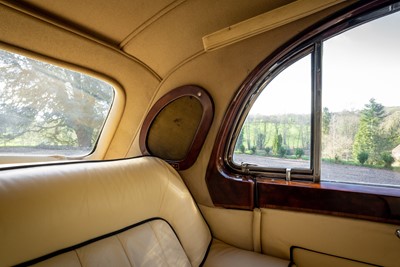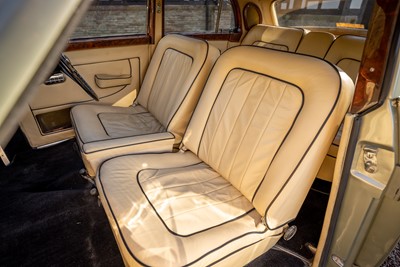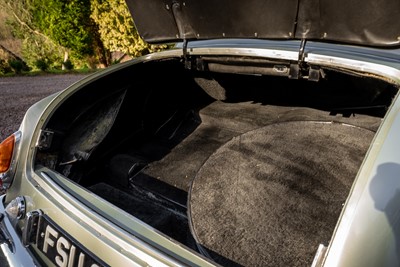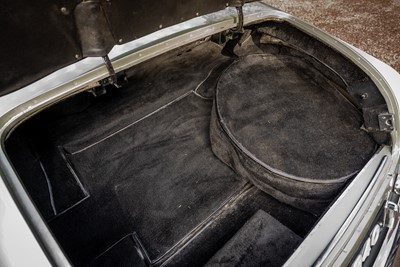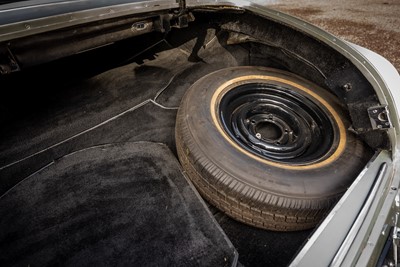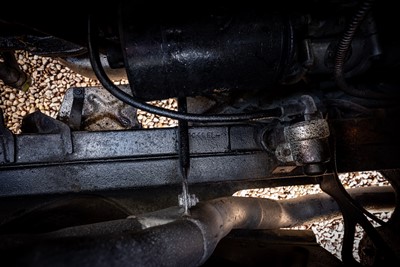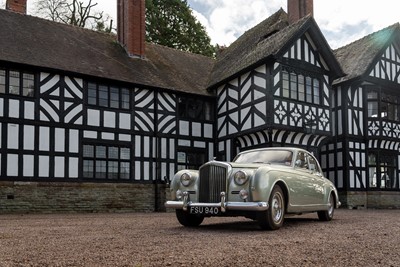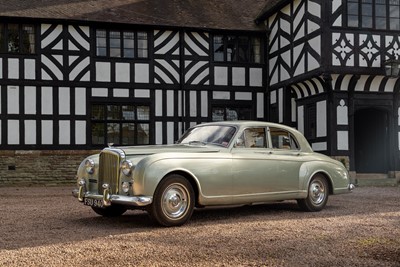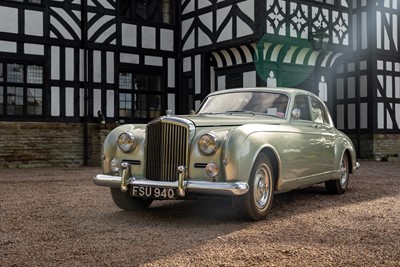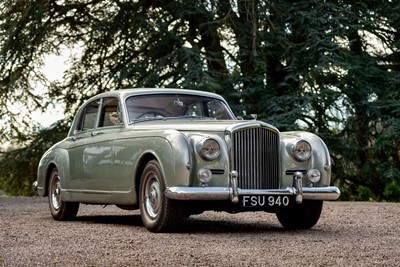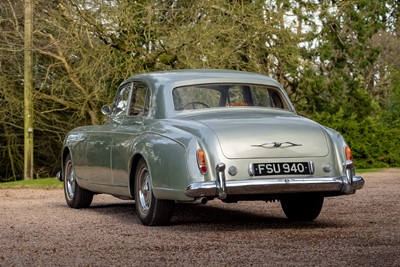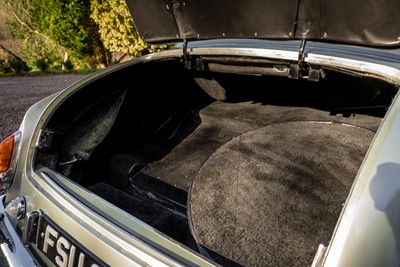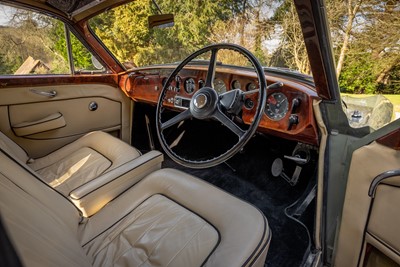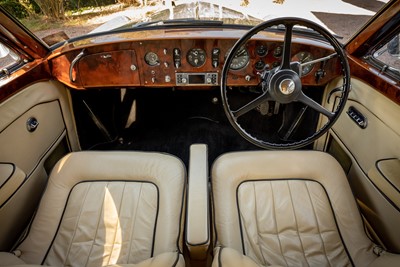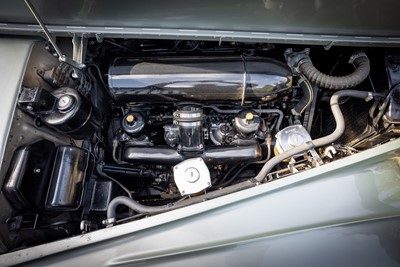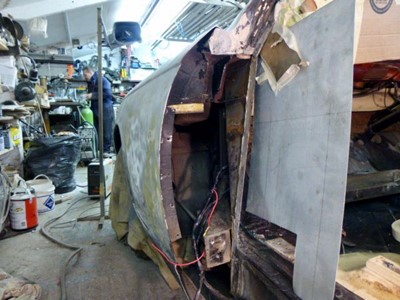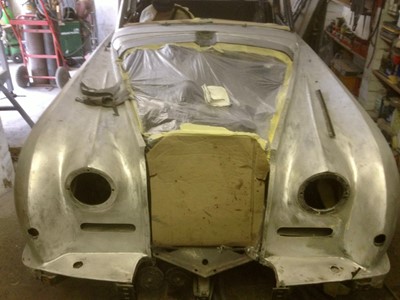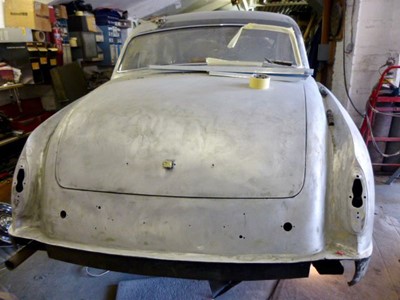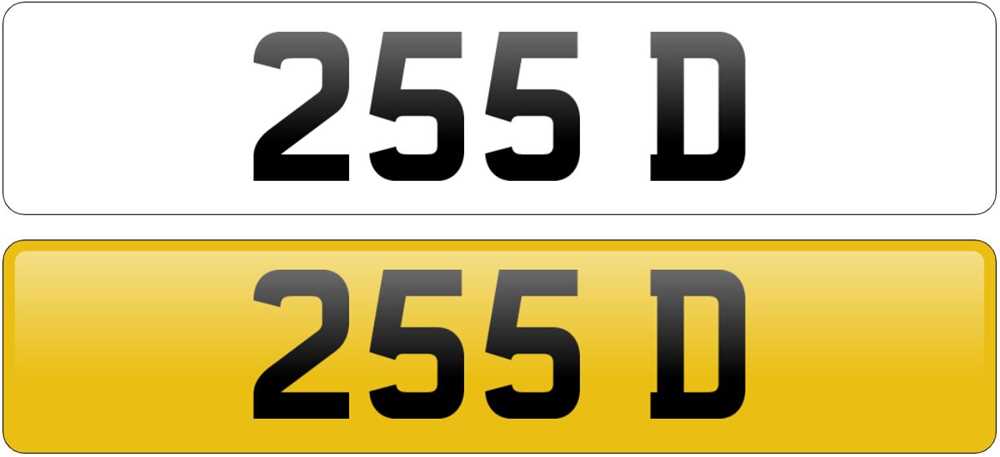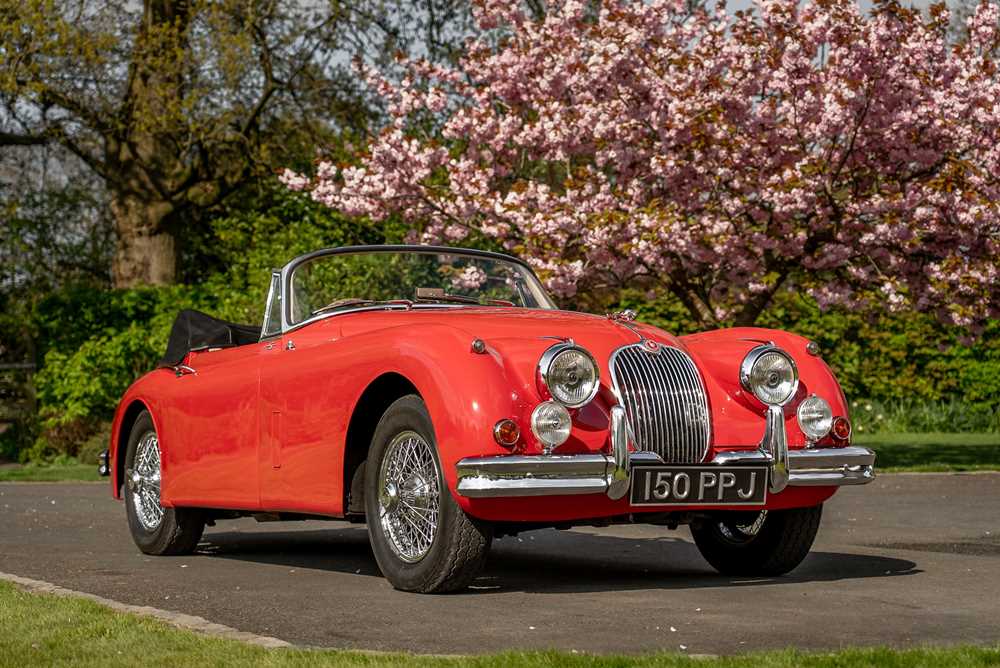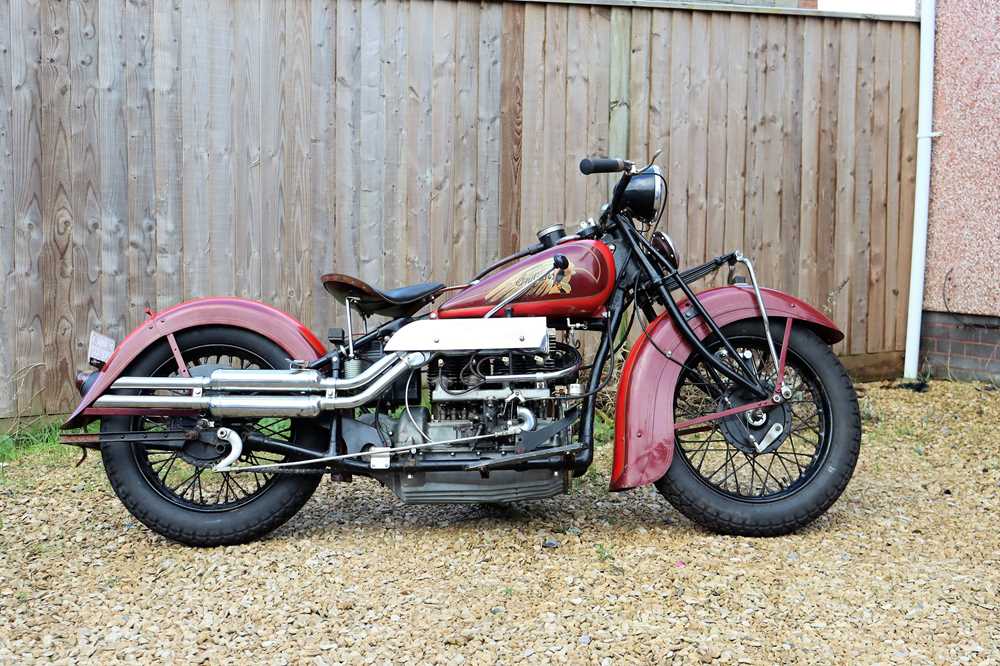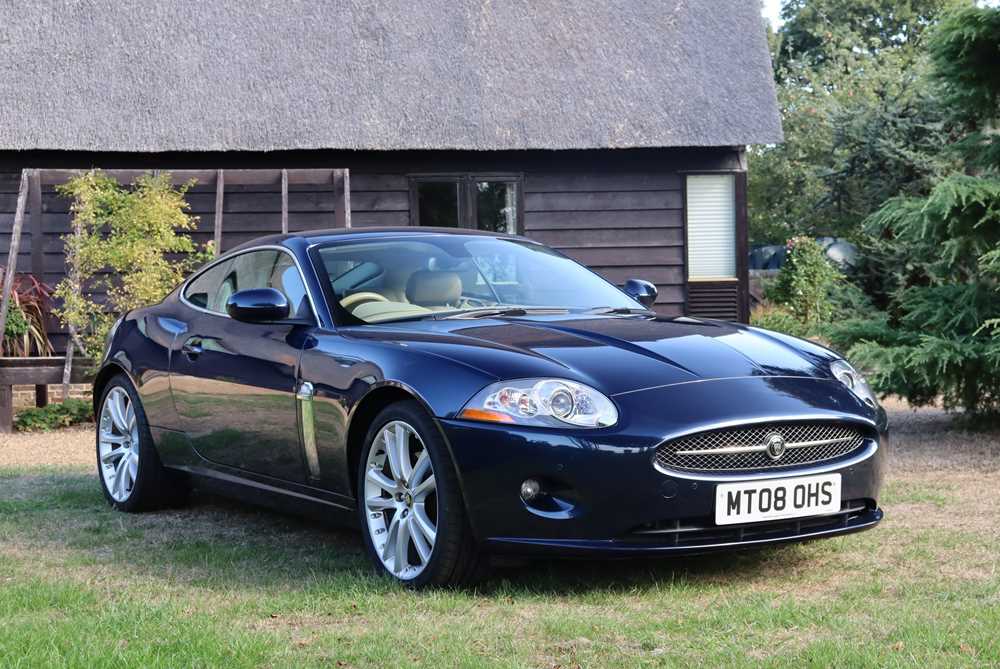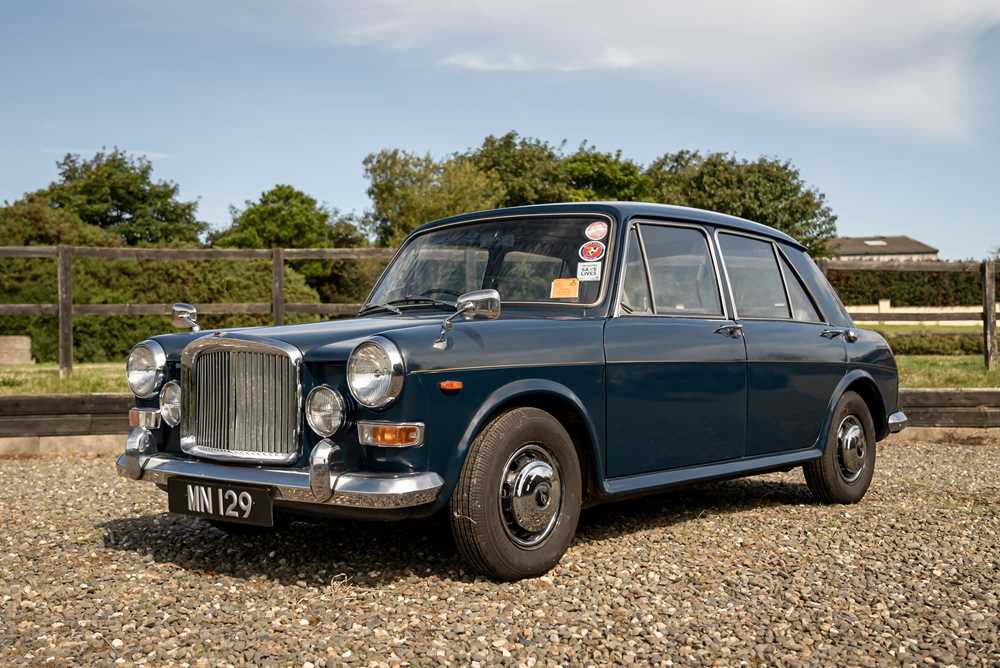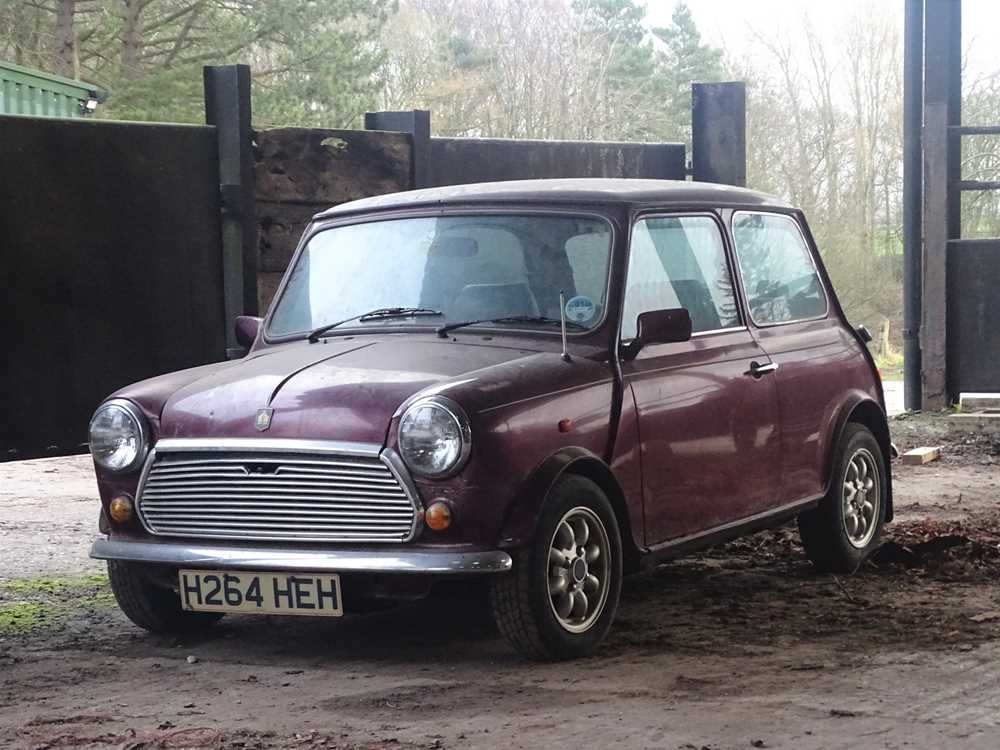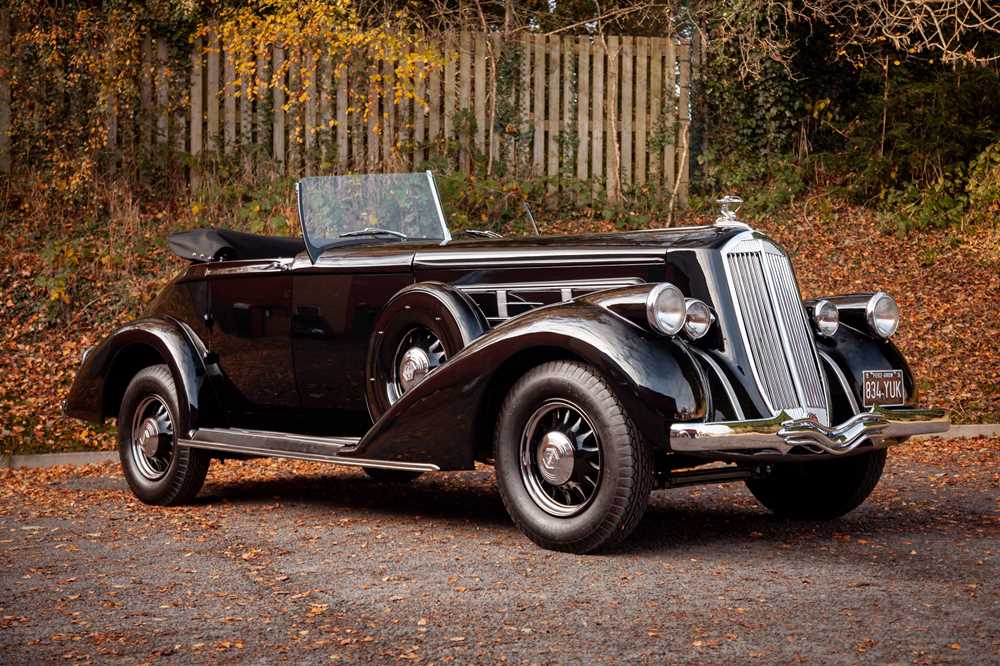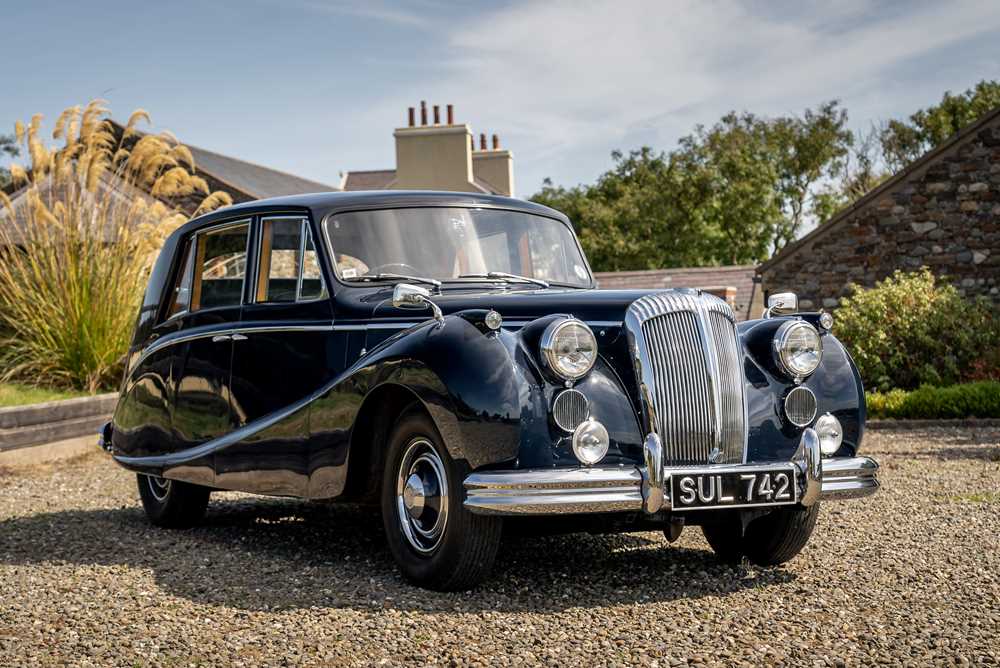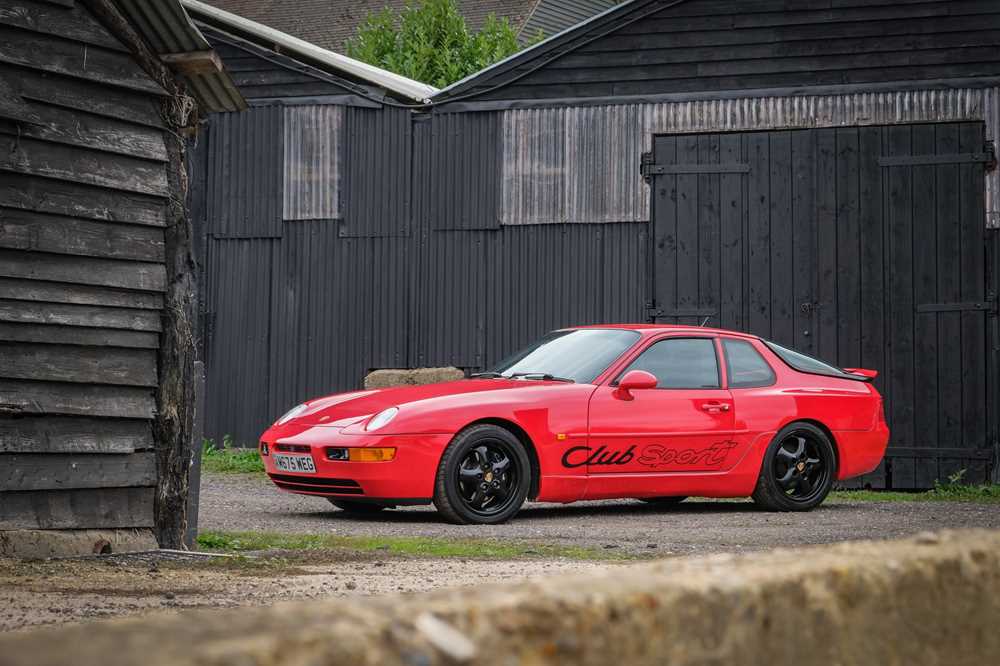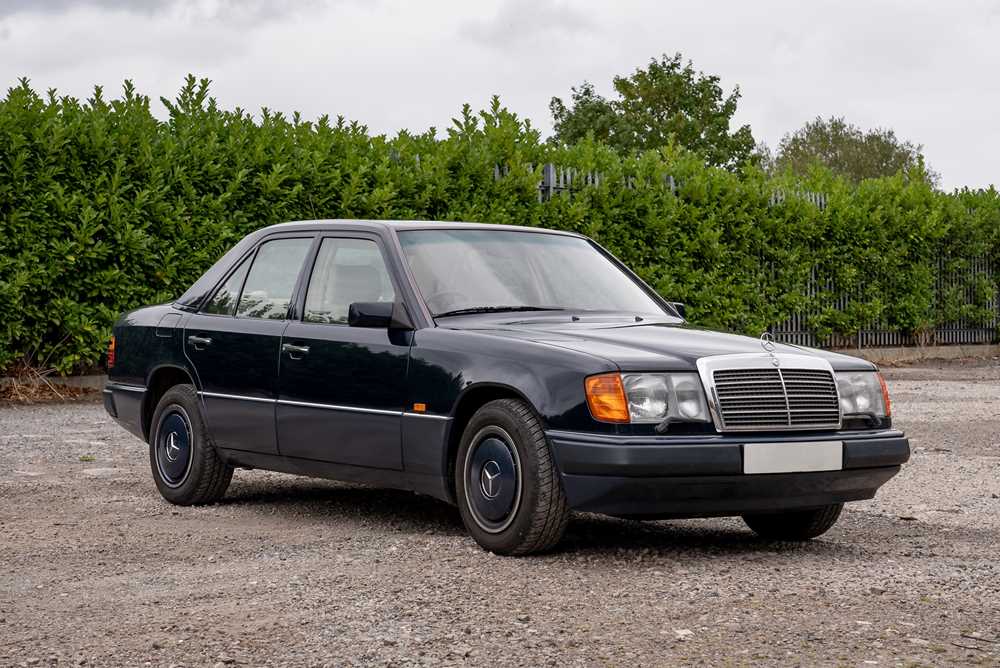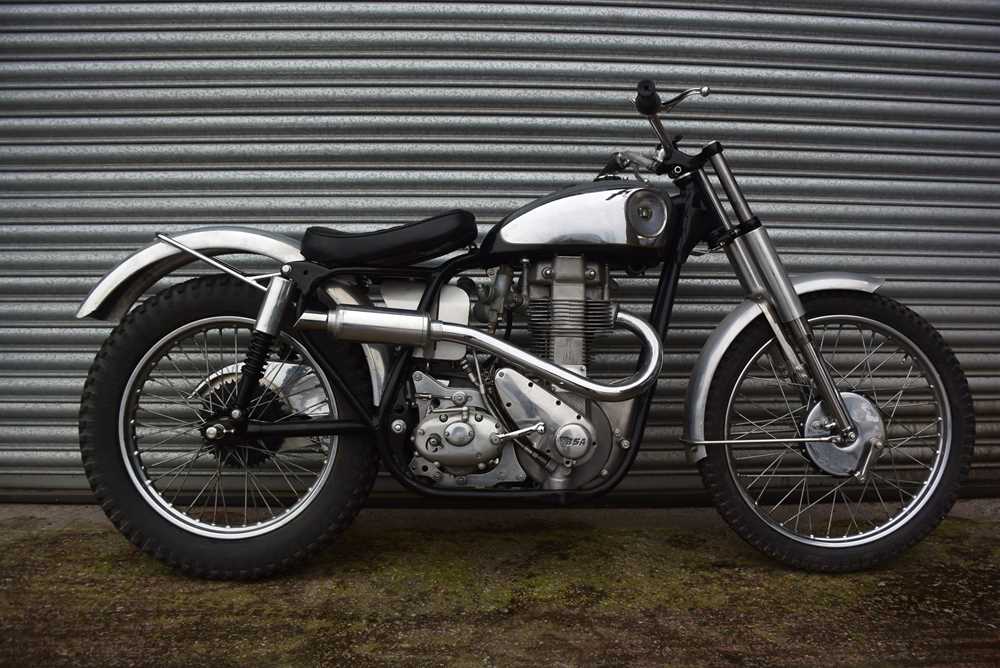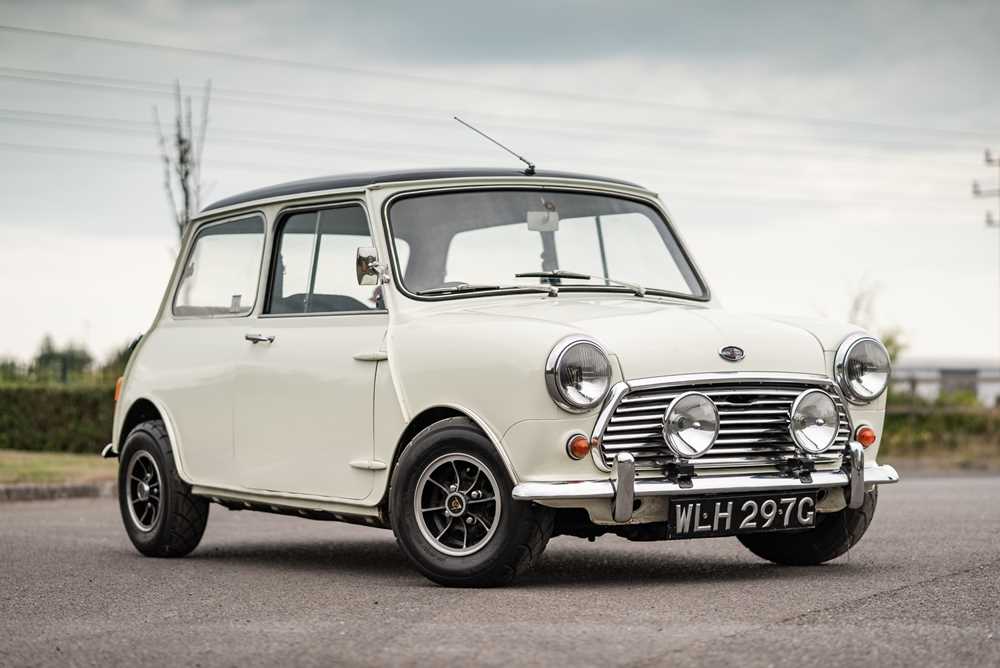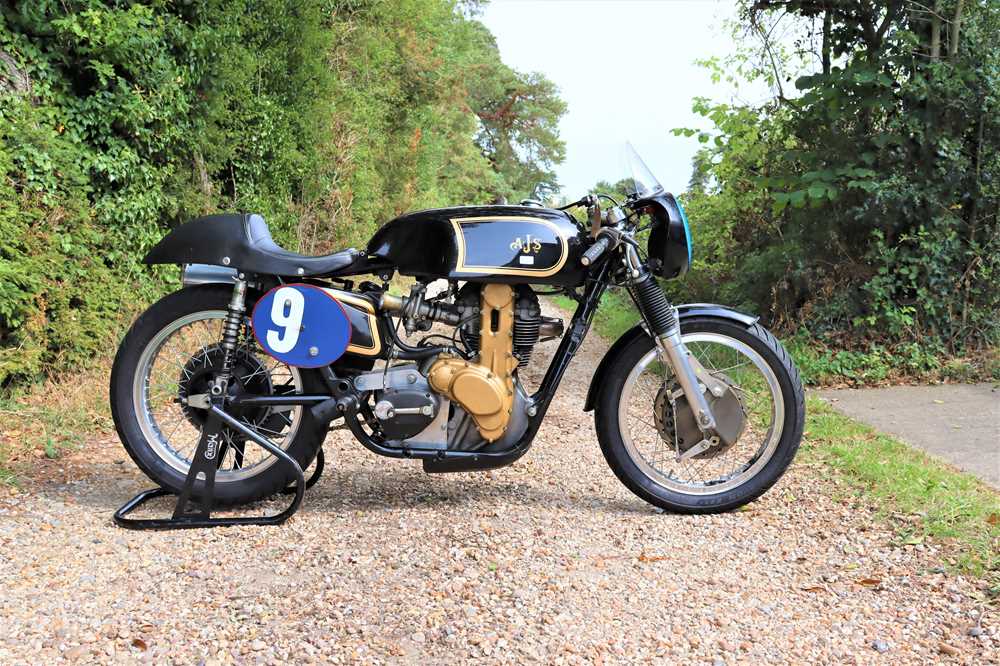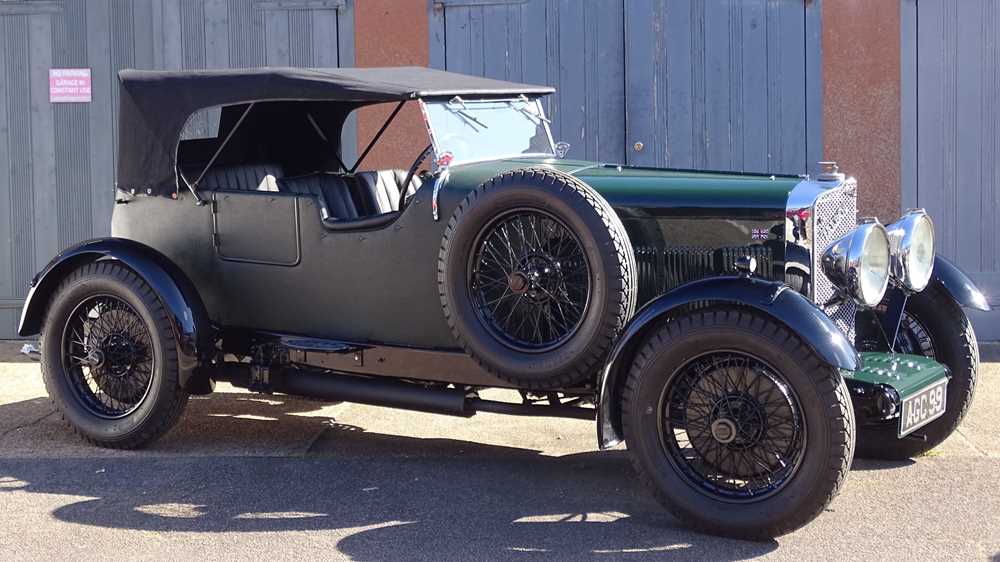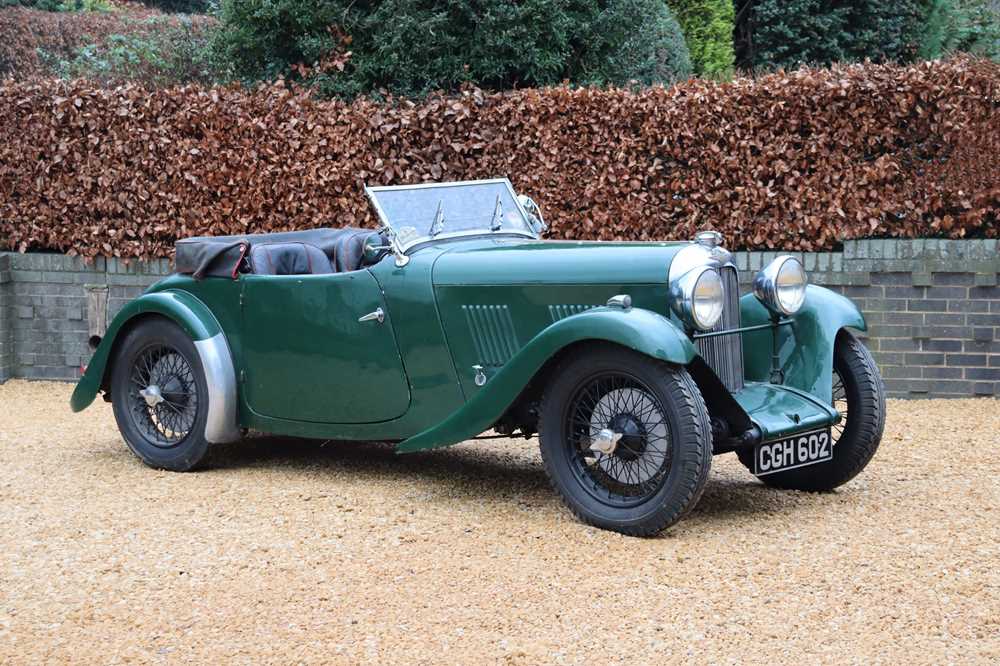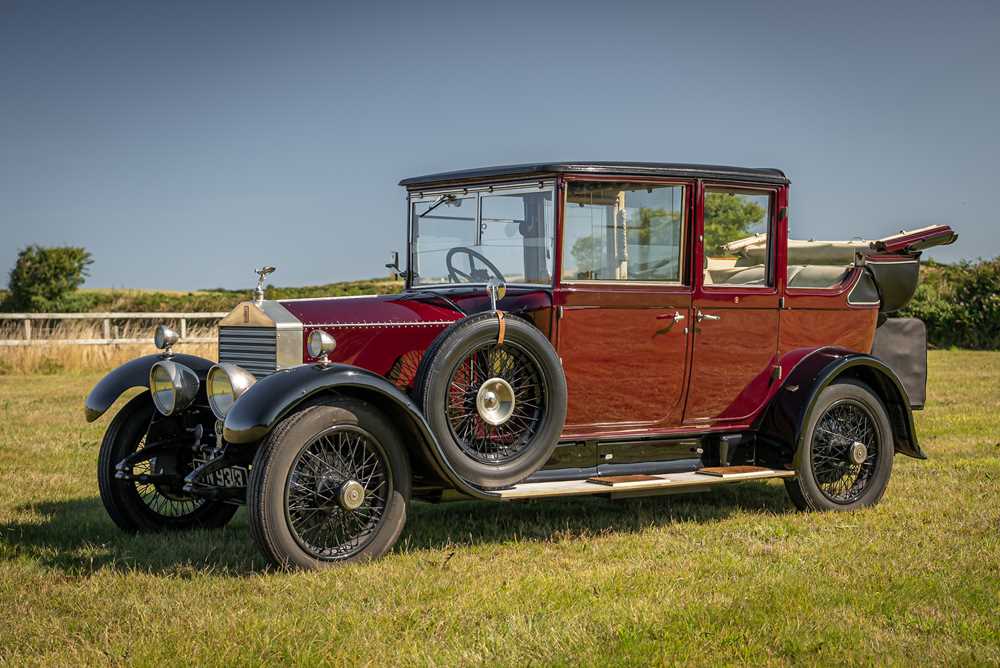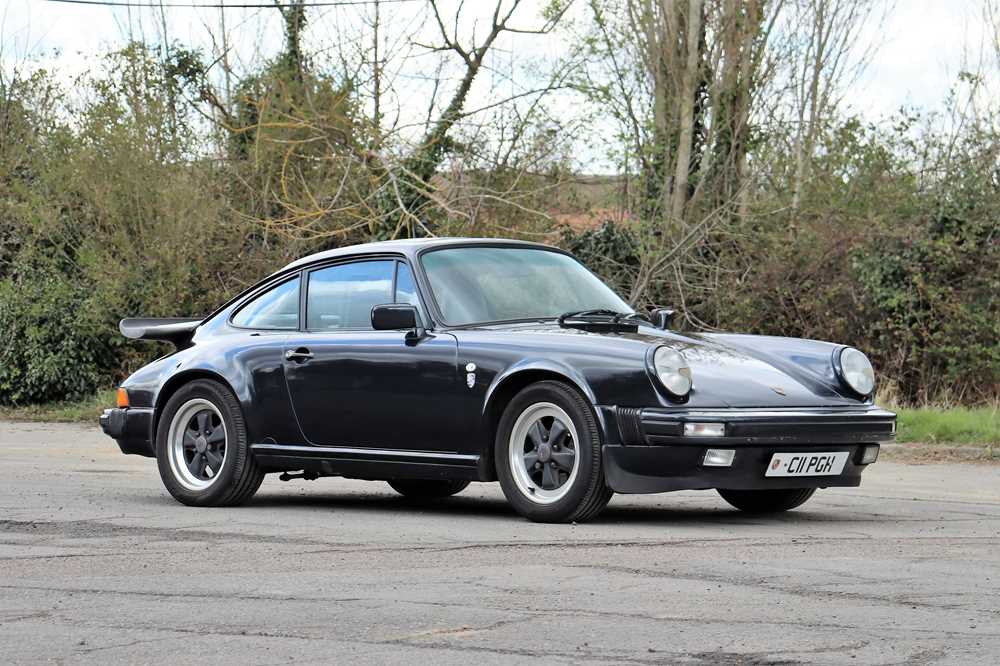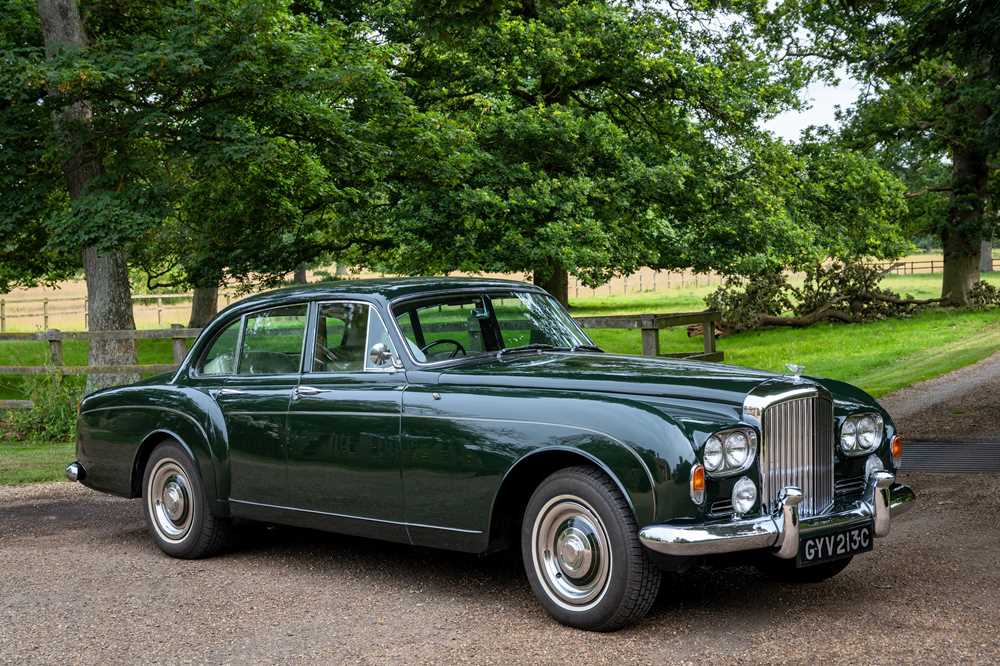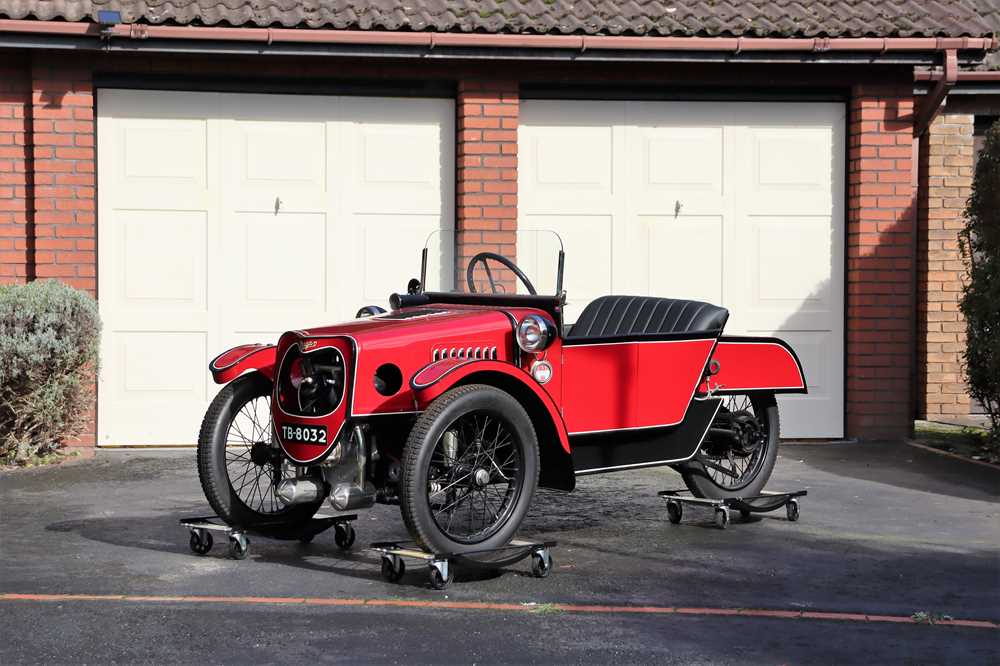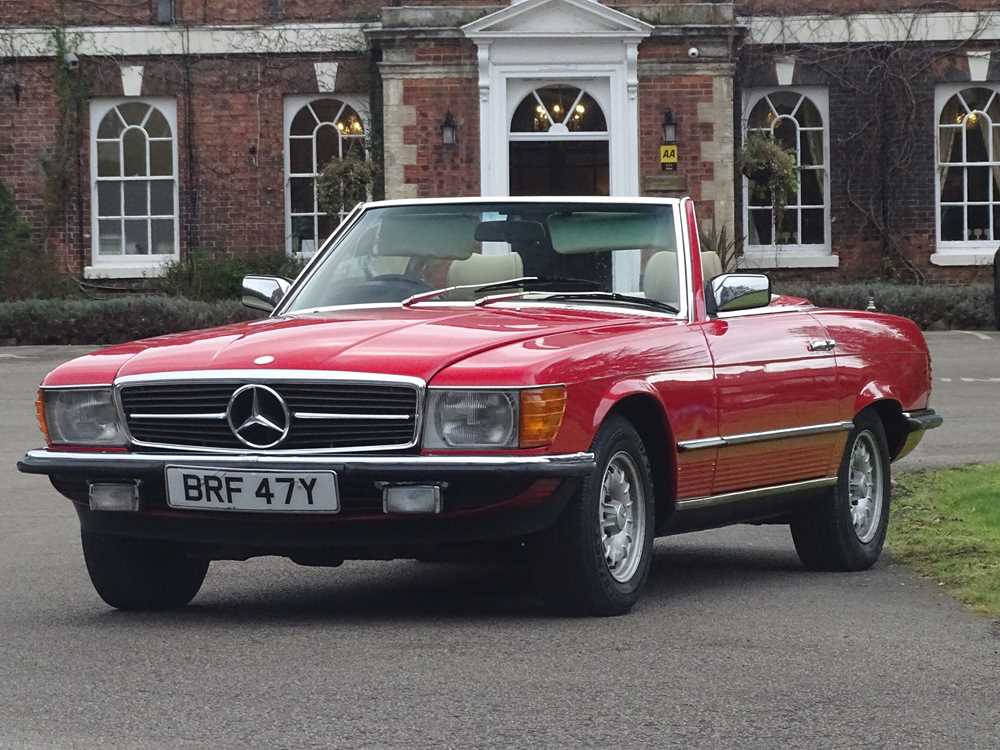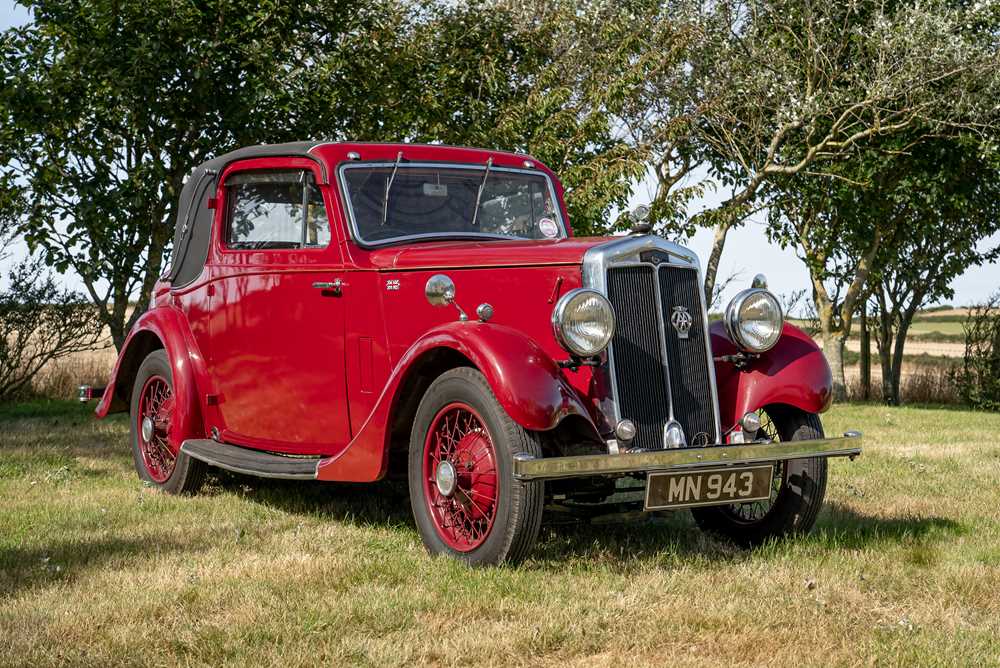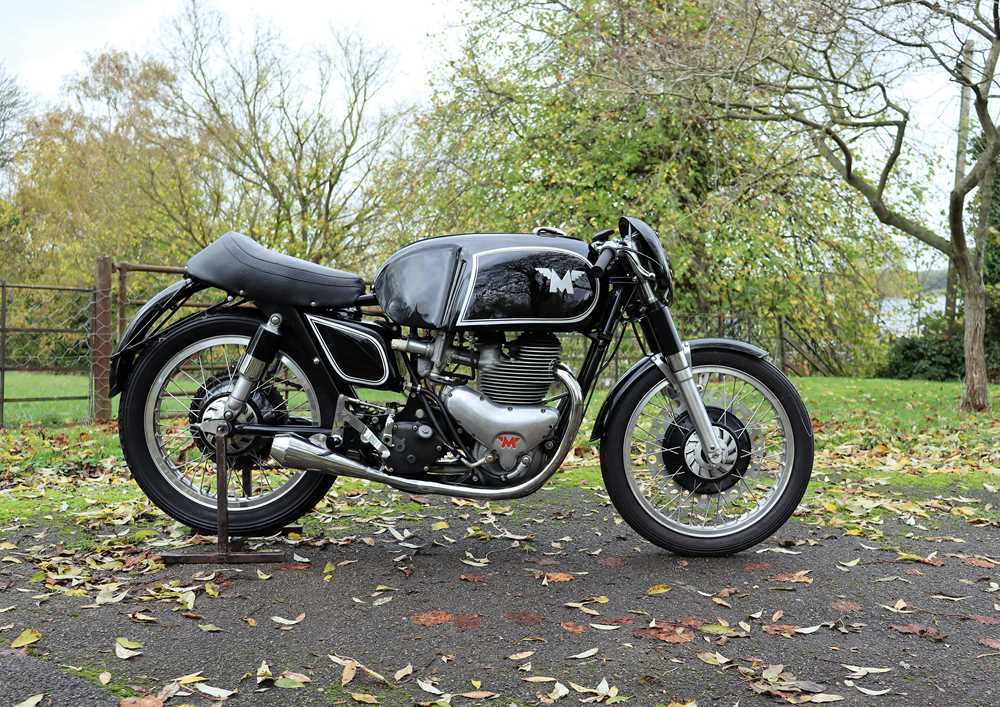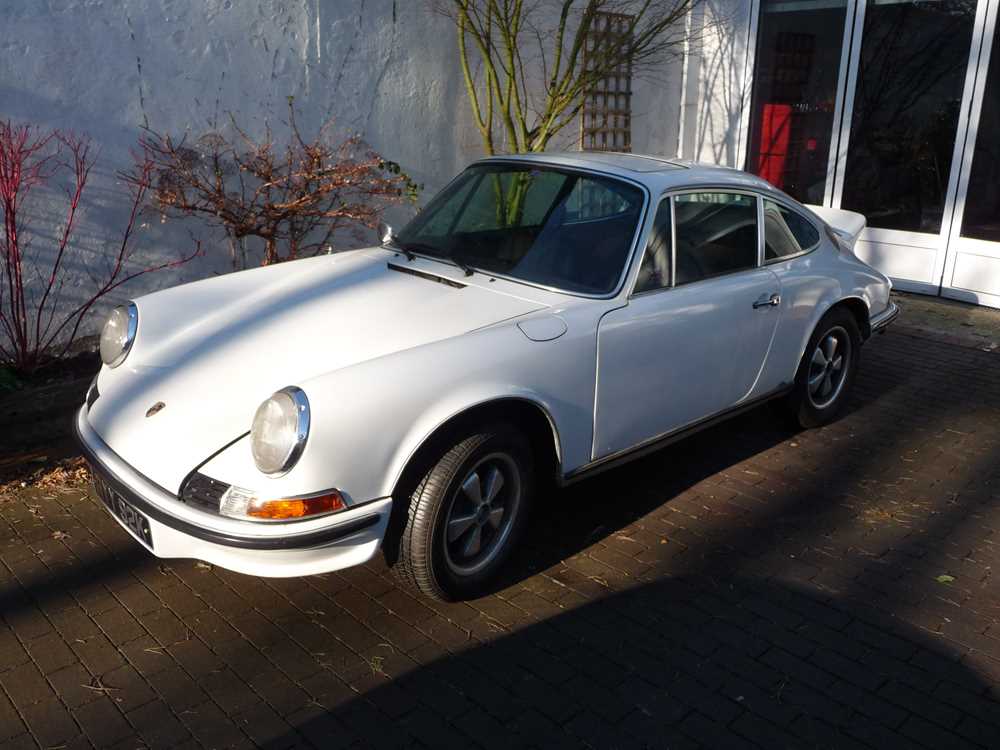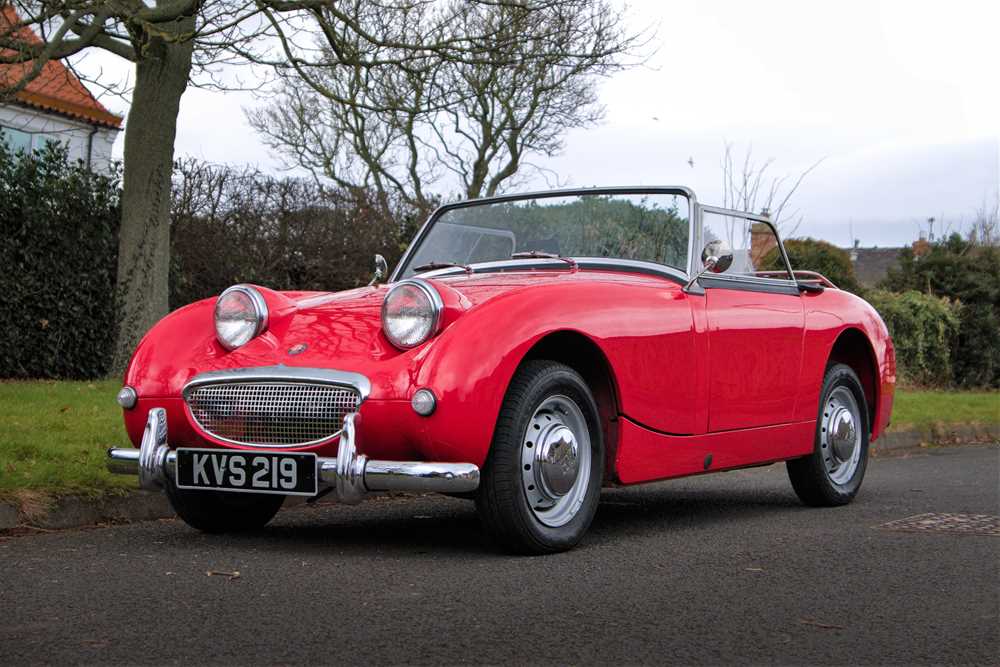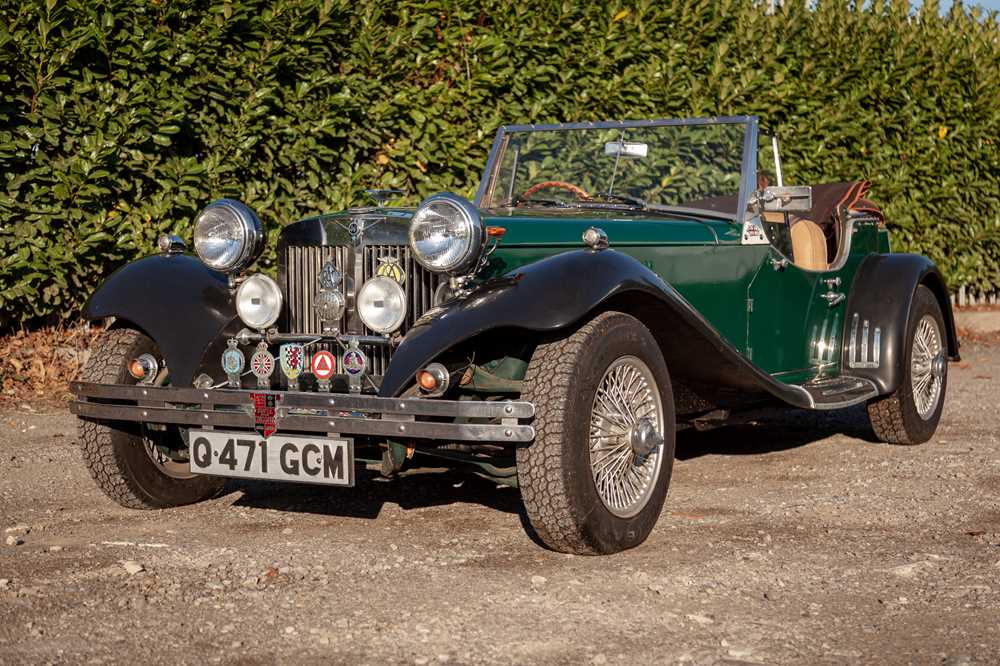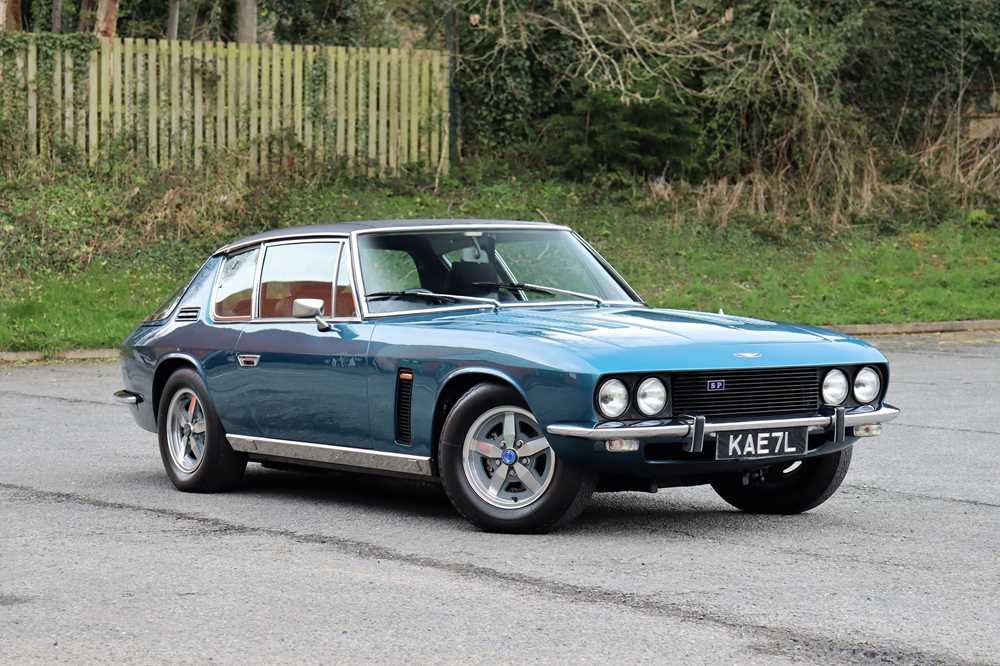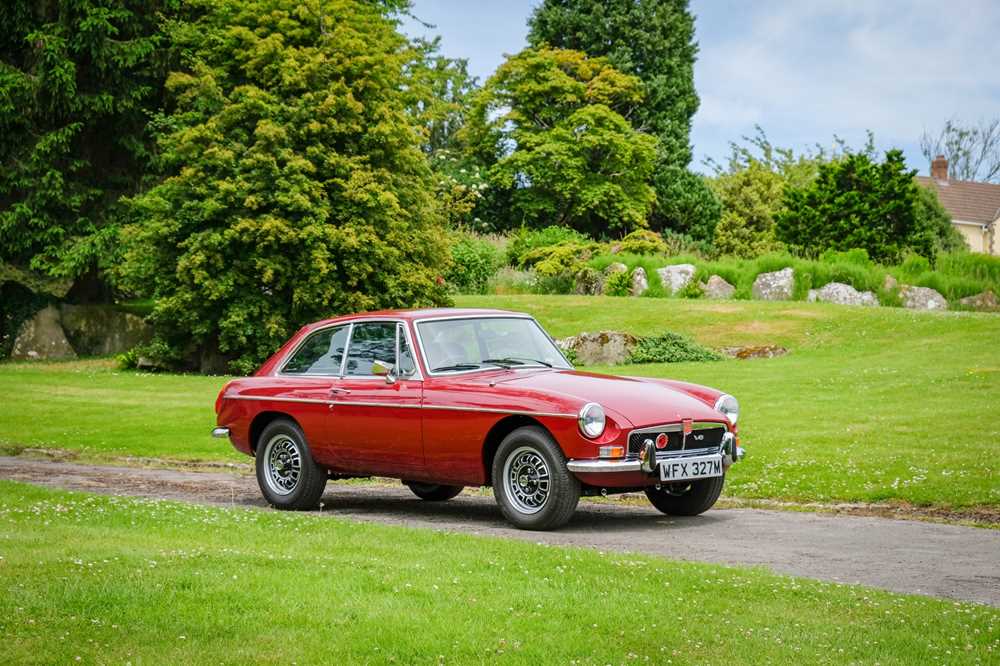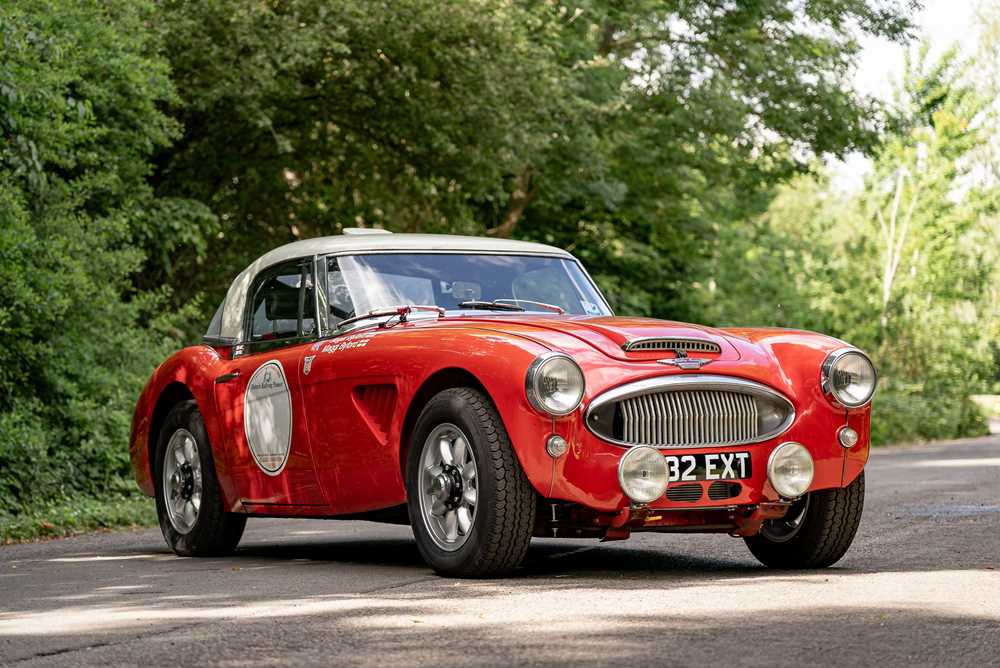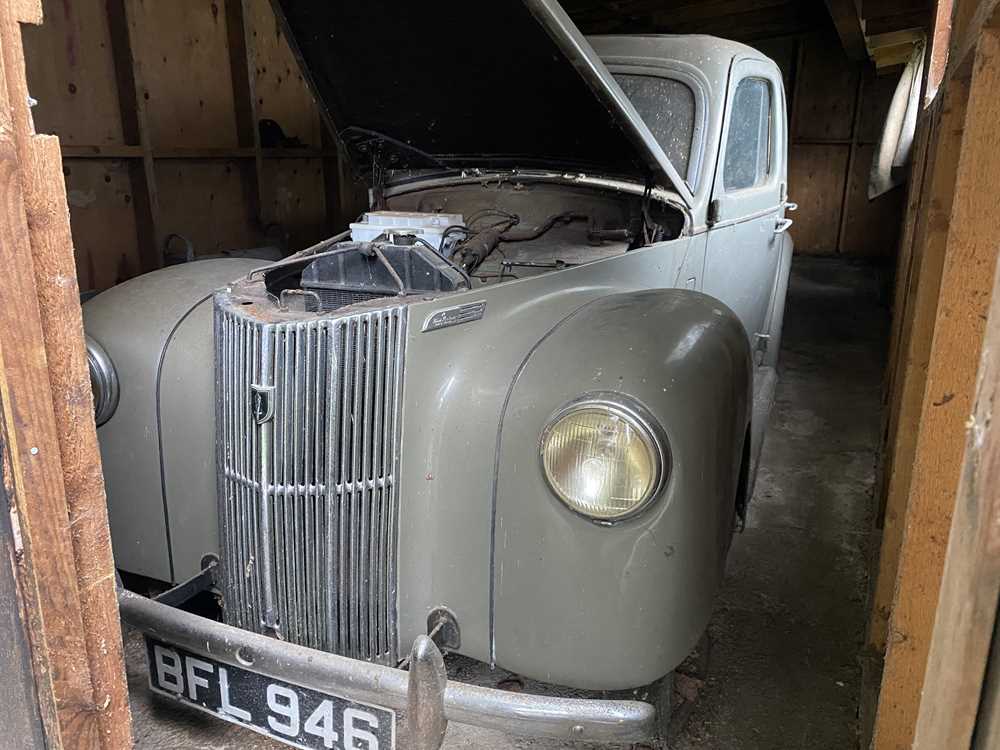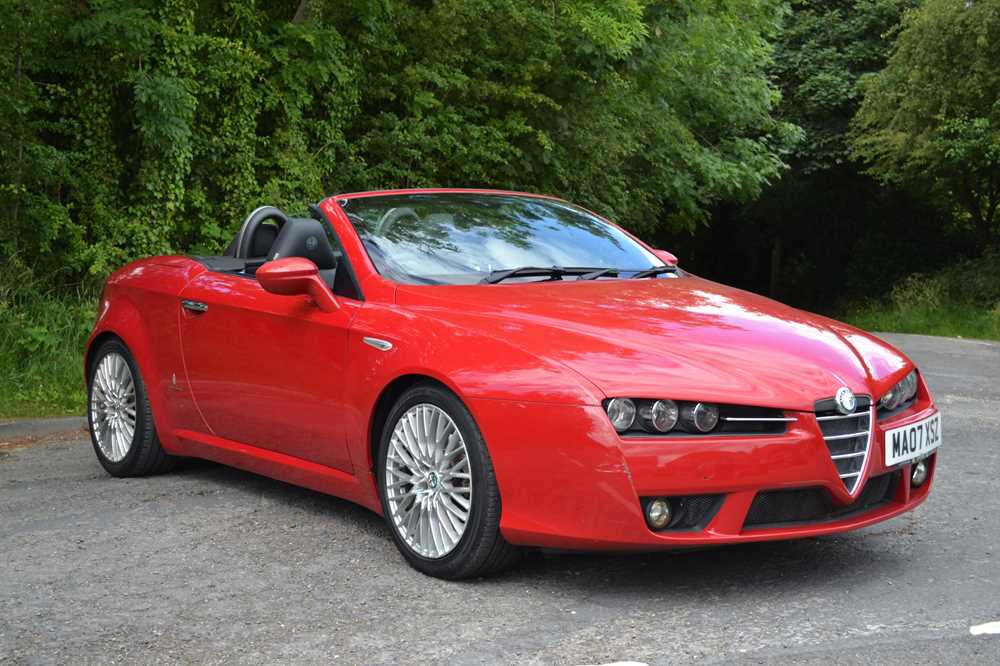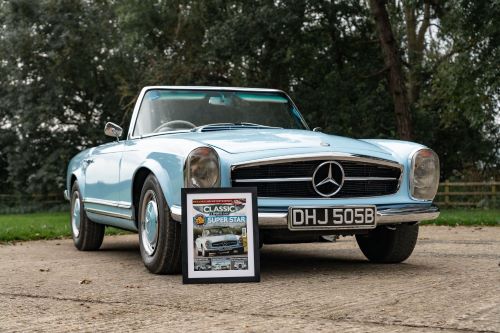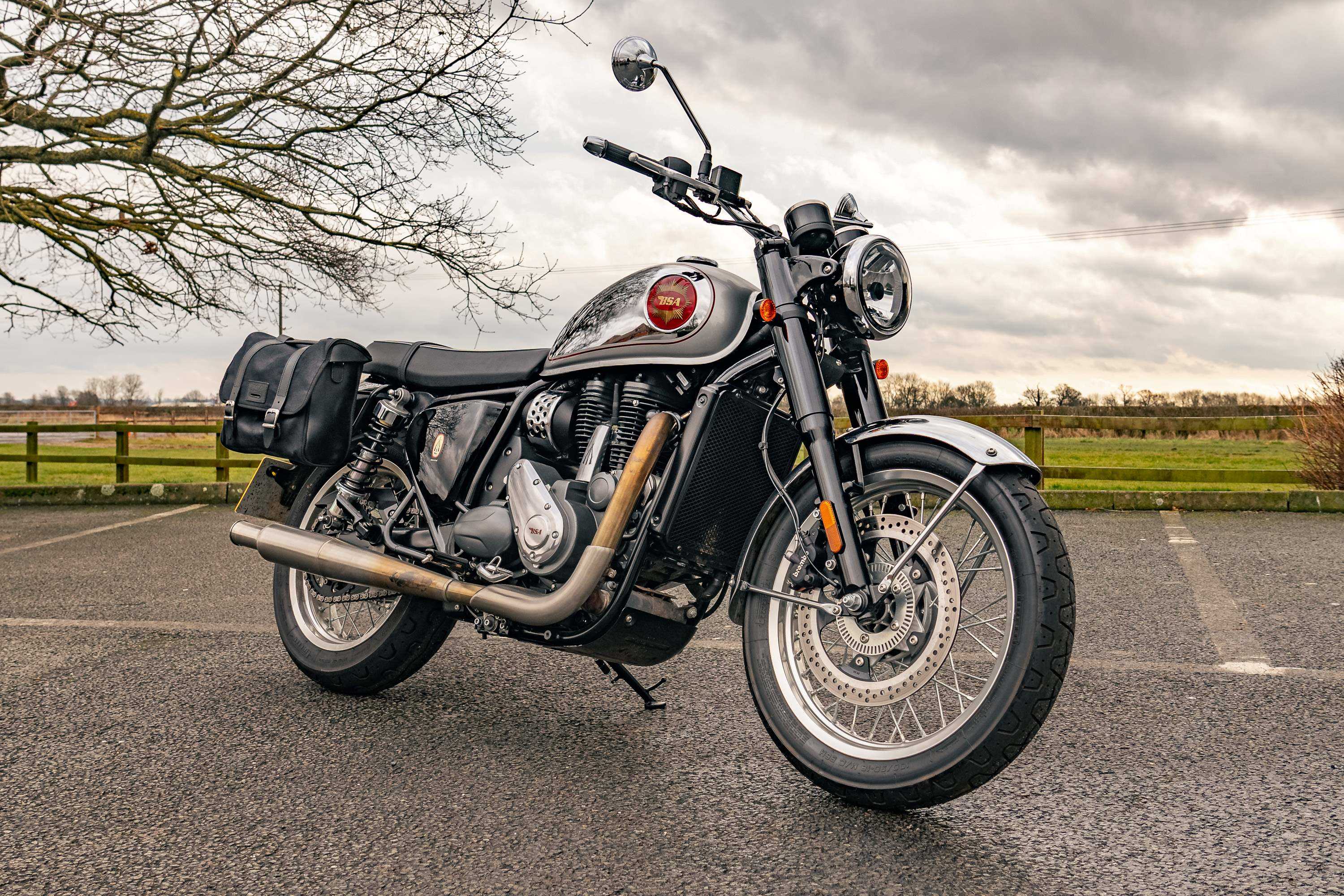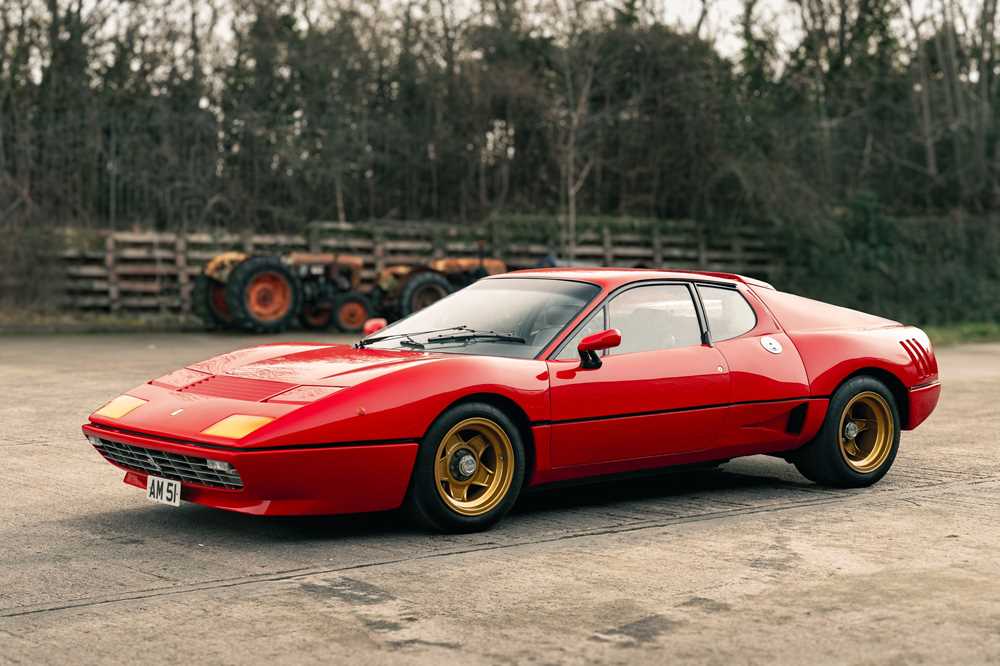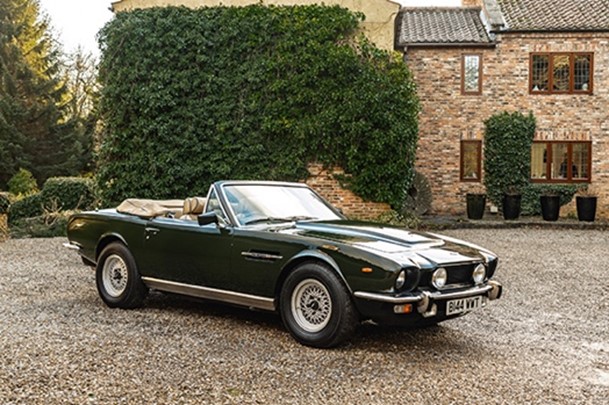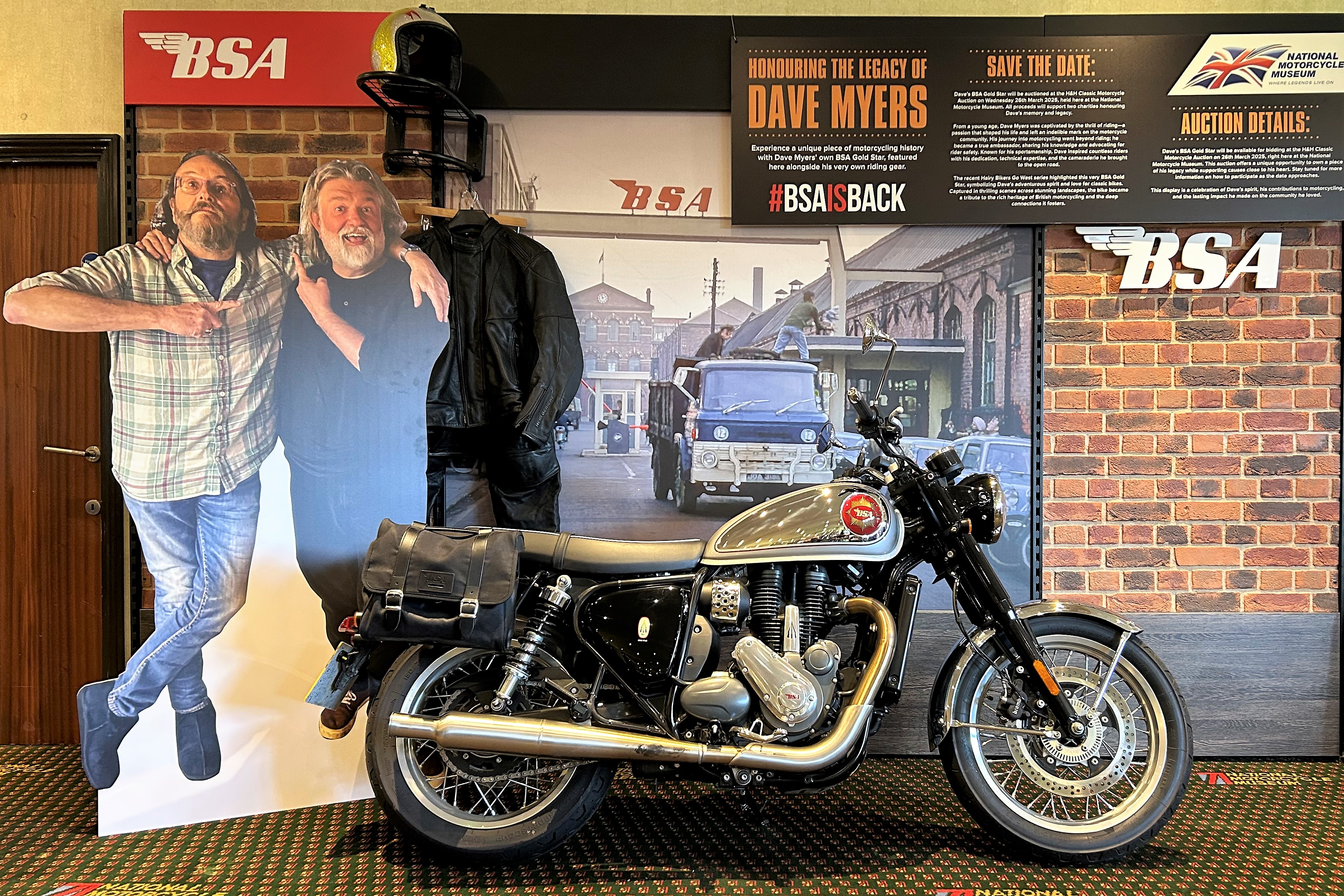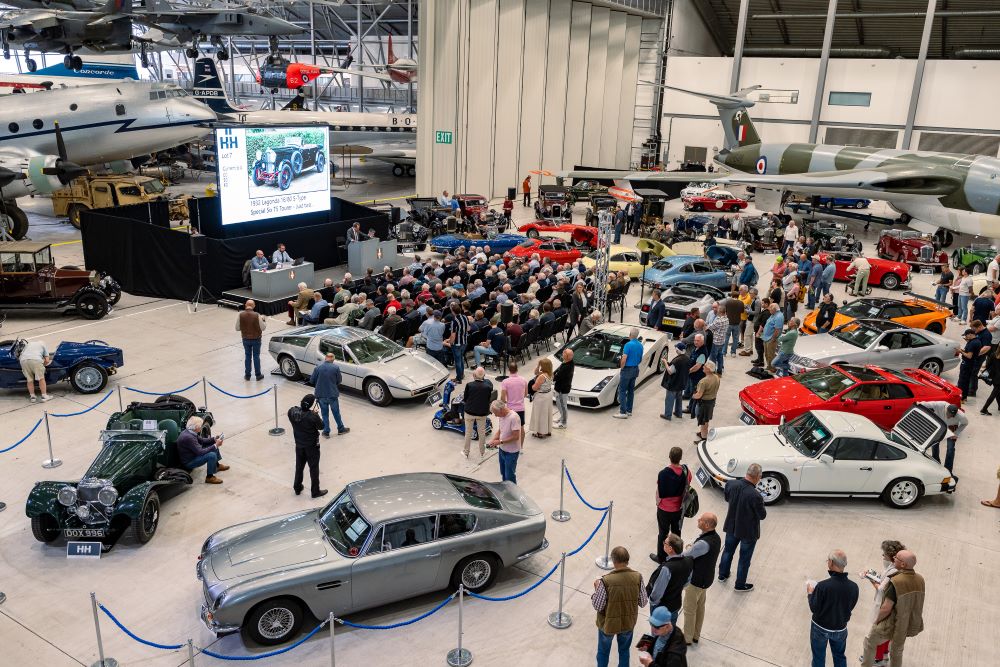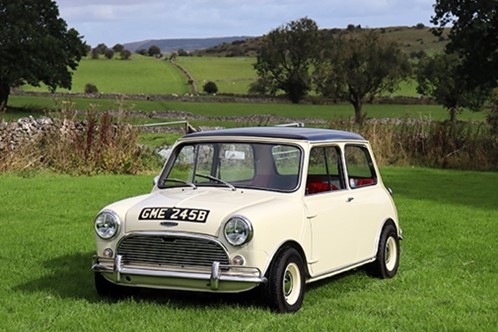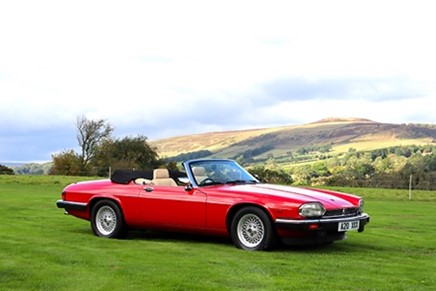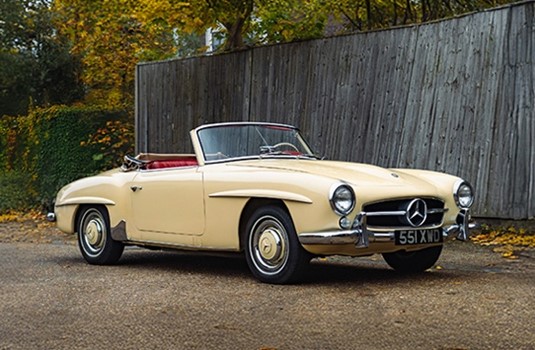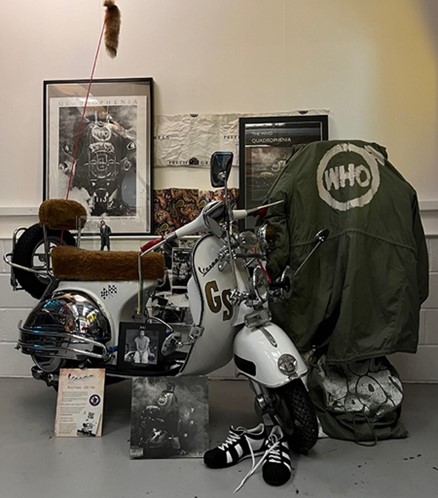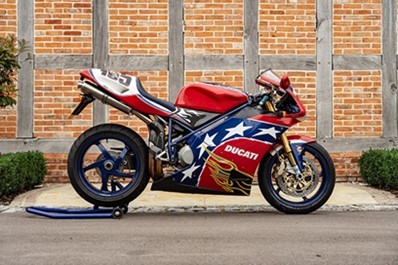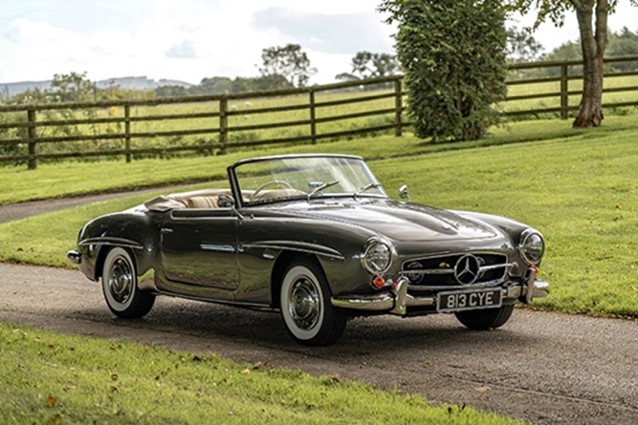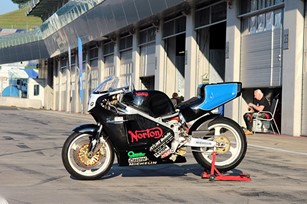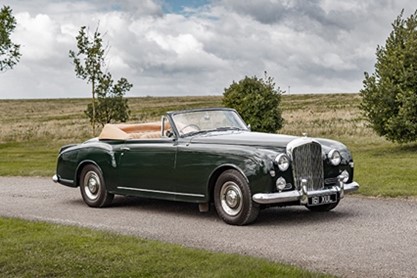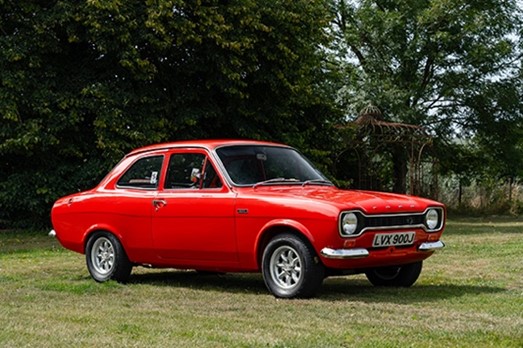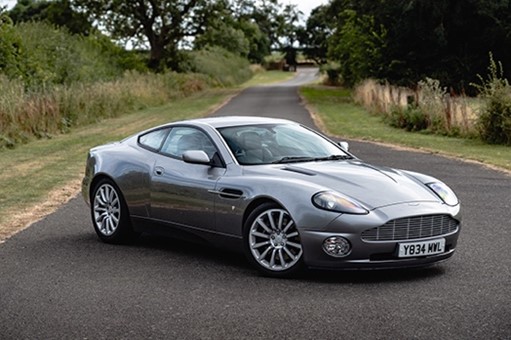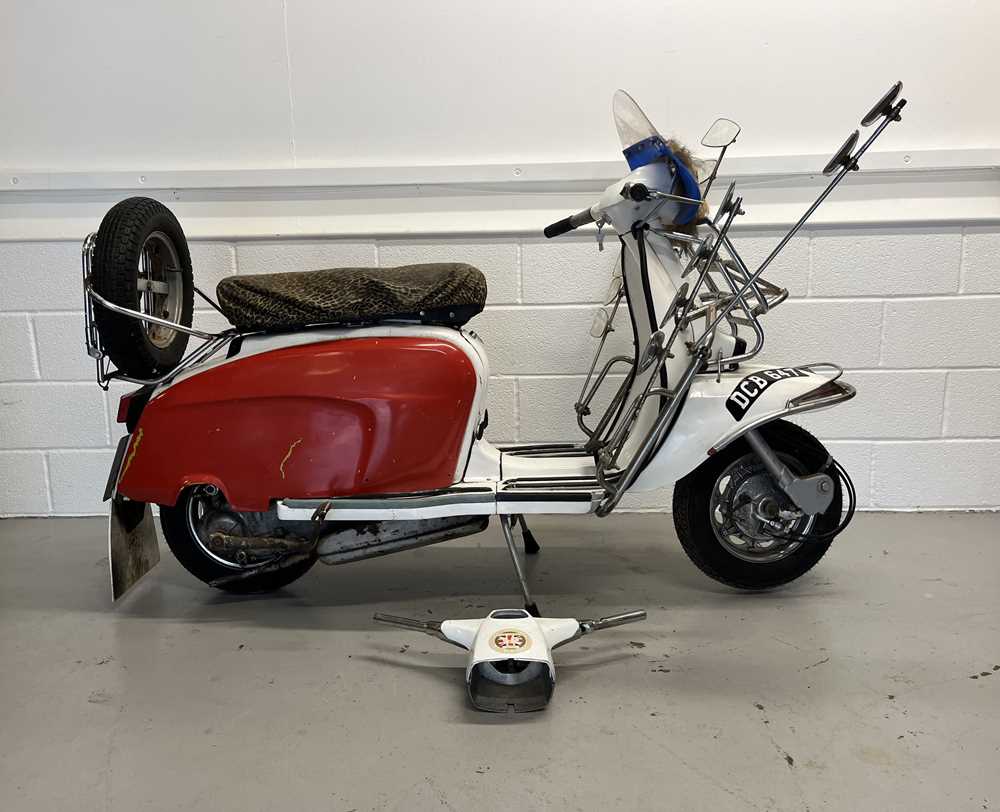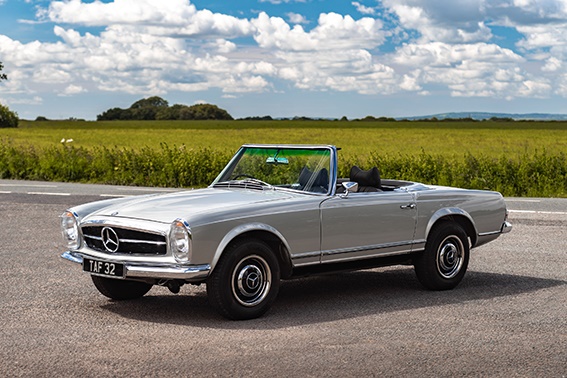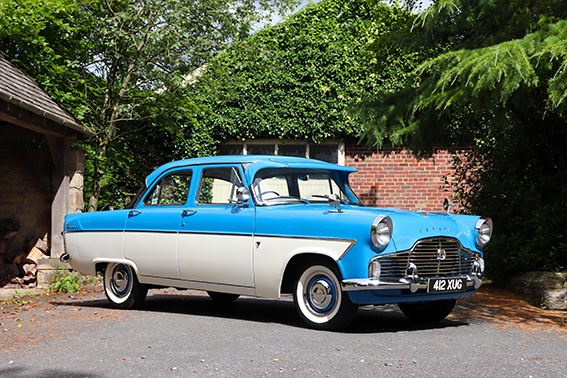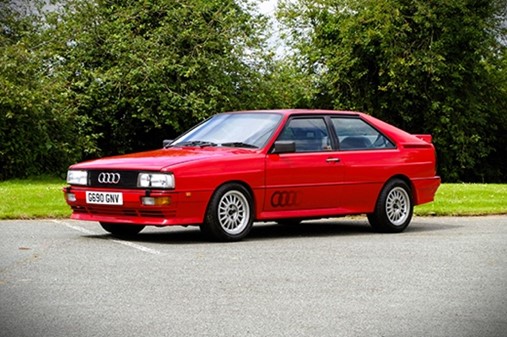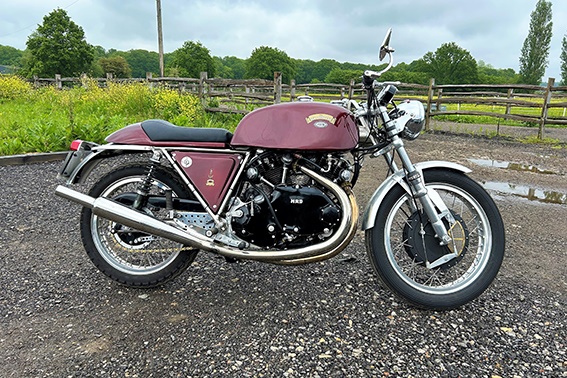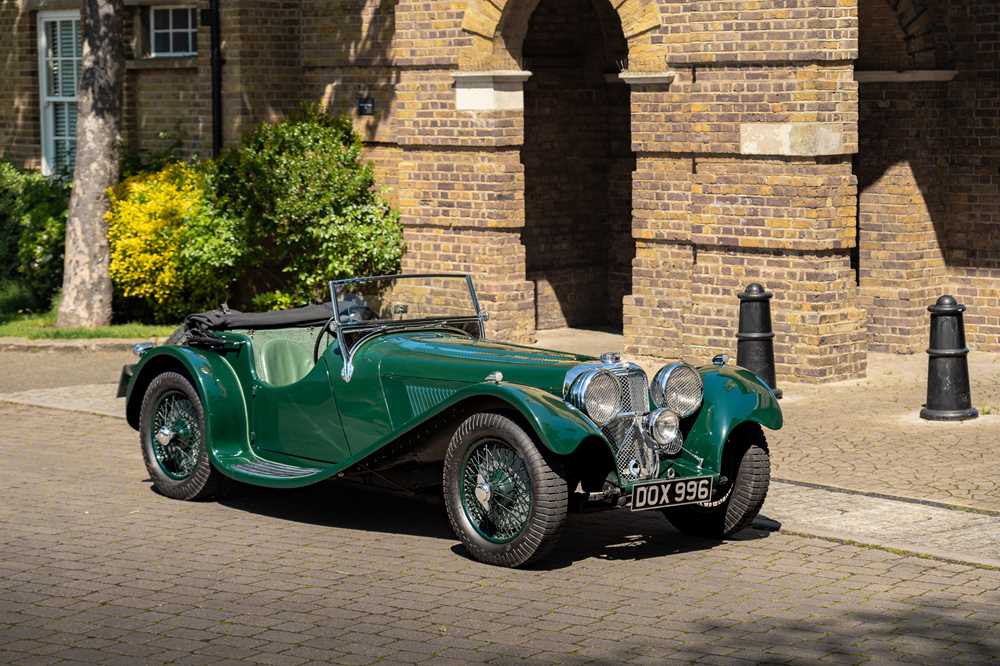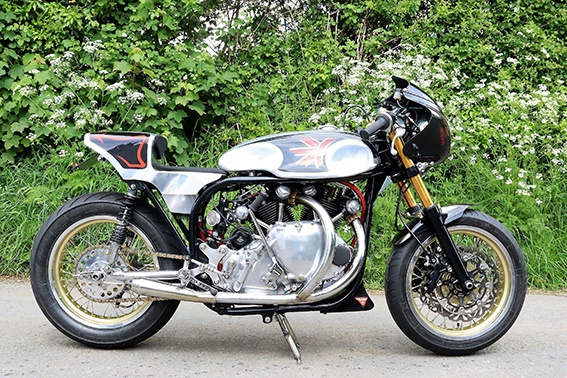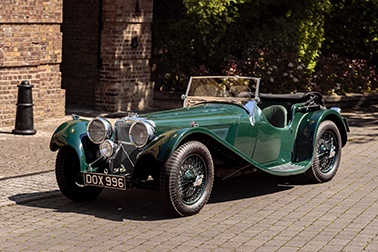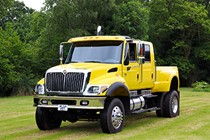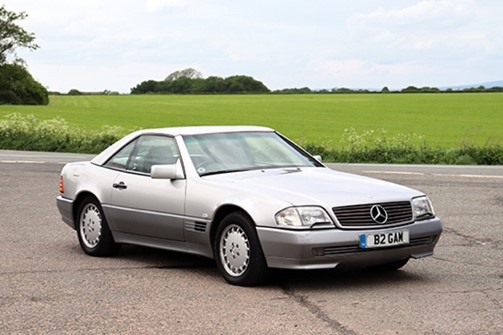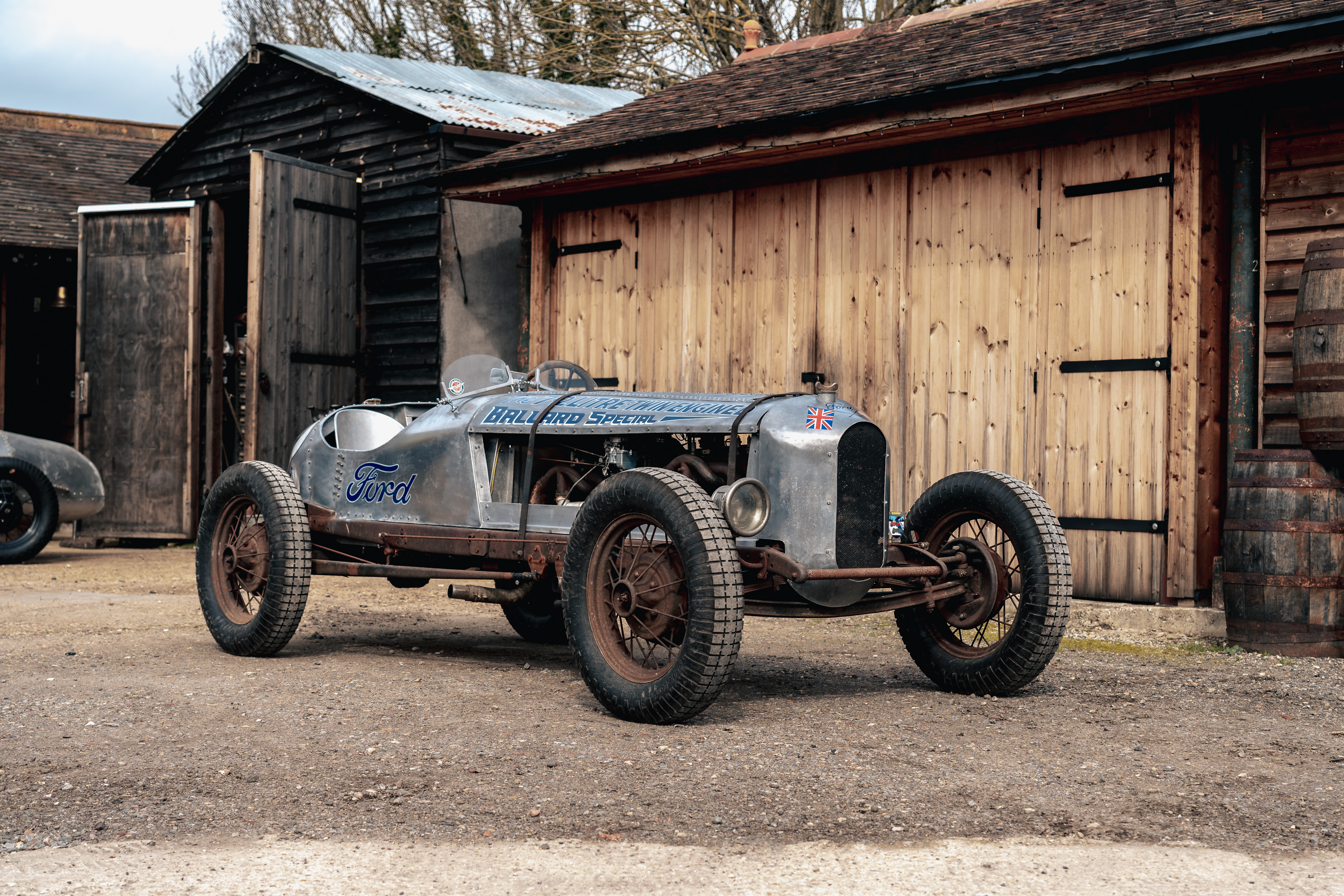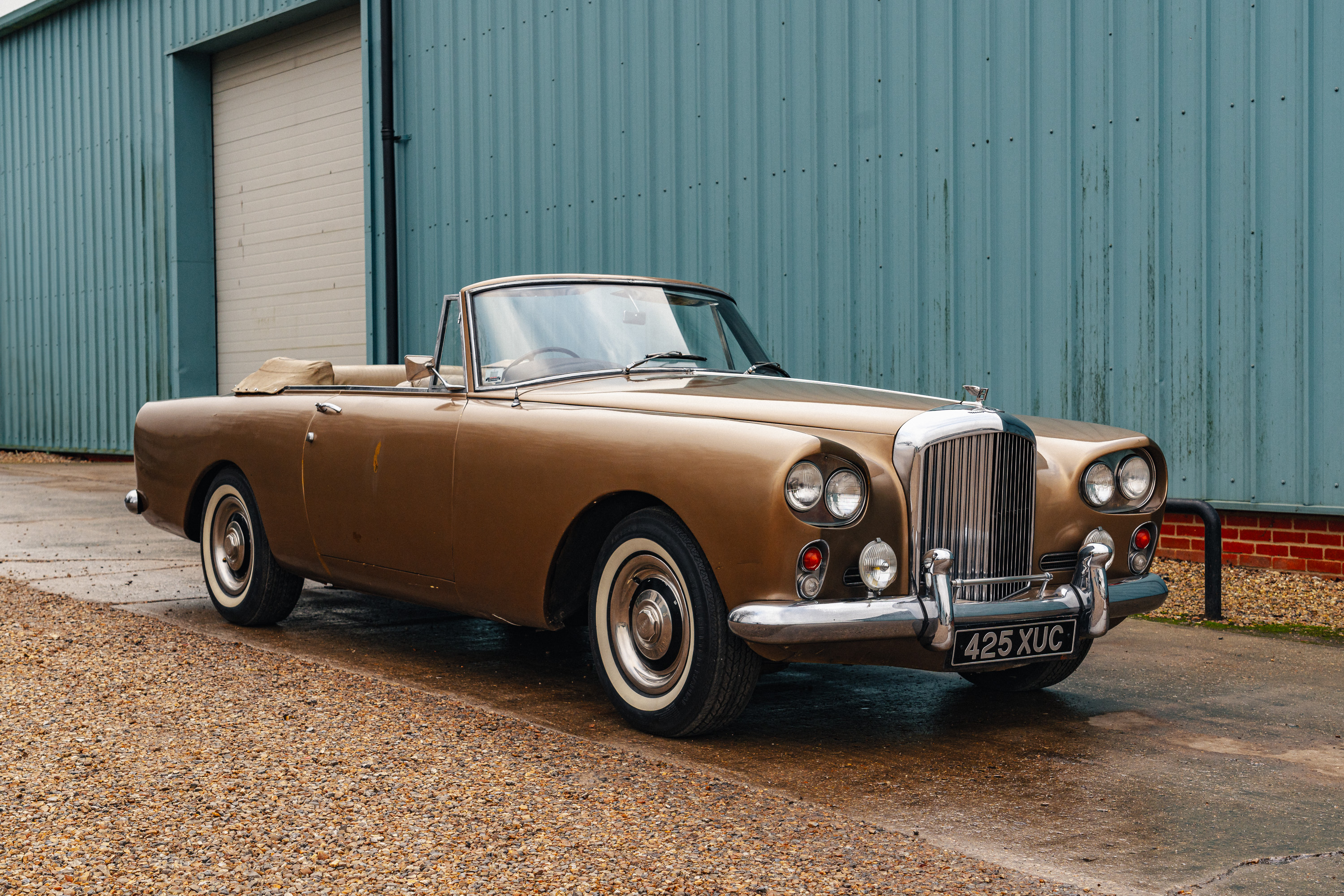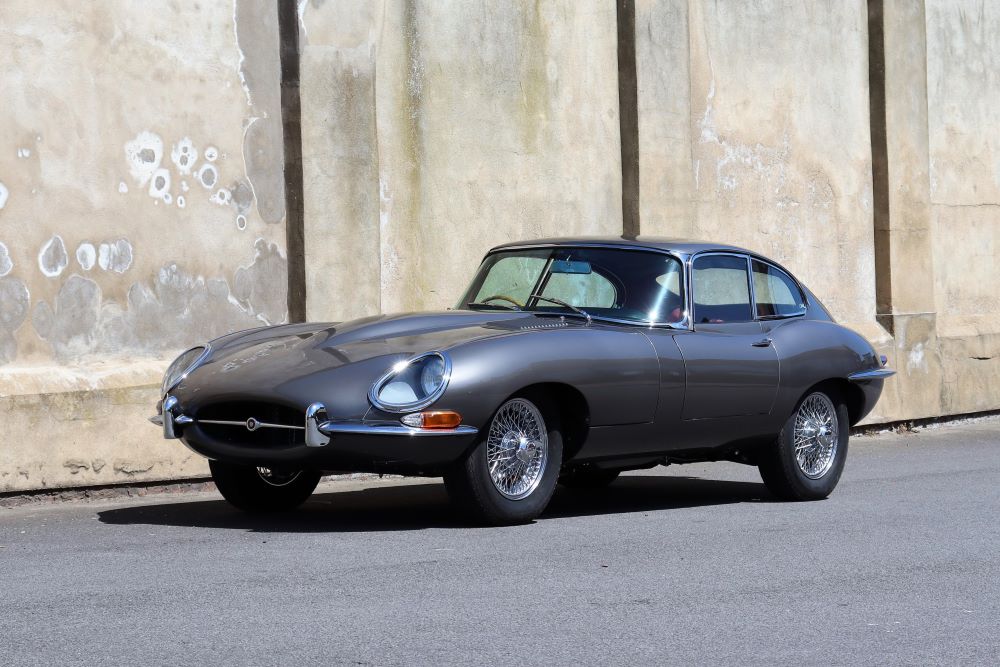16th Mar, 2022 13:00
Imperial War Museum, Duxford
1958 Bentley S1 Continental Sports Saloon
Coachwork by James Young
Estimated at £160,000 - £180,000
Registration No: FSU 940
Chassis No: BC49EL
MOT: Exempt
- One of just thirteen right-hand drive cars to be bodied by James Young to its Design No. CT29 on the S1 Continental chassis
- The subject of a fully documented restoration by Matthew Rees of Swansea, culminating in a six-page feature in the November 2021 issue of Classic and Sports Car Magazine
- Supplied via Jack Barclay to Victor Ercolani Esq. (of ‘Ercol’ furniture fame)
- Just 32,000 miles from new with documented ownership history
- Finished in striking Rolls-Royce Pewter with Tan leather
- Fitted with some very subtle upgrades to assist with modern life, including satellite navigation, bluetooth and DAB Radio
Despite the popularity of the Standard Steel bodywork, introduced when production of Rolls-Royce and Bentley cars resumed after WW2, independent coachbuilders continued to offer alternatives, perhaps the most stylish being those produced to clothe the Bentley Continental. The latter began life exclusively as a two-door car, but in 1957 H J Mulliner was sanctioned to build a four-door car on the Continental chassis, this elegant six-light model being known as the 'Flying Spur'. James Young, by then part of the Jack Barclay Group, responded with its own equally sporting four-light four-door saloon. Elegant, well-proportioned and handsome, James Young's four-door Continental offered the latest in automotive styling combined with practicality, grace and space.
To put back together an old car that someone else has taken apart is never easy. When that car in question is a 1950s Bentley S1 Continental the problems only multiply. Restorer Matthew Rees of Swansea was tasked with this mammoth project, following our vendor’s acquisition of the rare James Young-bodied Continental nine years ago – the perfect stable mate for his S1 fastback. But after using the James Young for a while, he noticed some paint bubbles on the sills and despite investigations revealing the inner structure to be sound, he embarked on the task of taking it apart anyway, having satisfied himself that its mileage of 31,000 was genuine. Given that he wasn’t that keen on the Mason’s Black original paintwork, this was at least a chance to change the colour to something that accentuated those glorious subtle curves more effectively. He took the big car to pieces, reducing it over several months to a rolling shell, still with its drive train in place but denuded of paint, glass and interior trim; however, life and other projects got in the way, meaning sadly the carcass and its parts lay dormant for a number of years.
A former engineer and director of a major manufacturing company, Matthew Rees has an approach to restoring cars that is as forensic as it is logical – Introduced by motoring journalist Martin Buckley, Rees travelled to Bromyard to inspect the car and meet our vendor. They struck an instant friendship, came to a deal that kept both men happy, and the Continental was soon despatched across the border into Wales. “The initial challenge was that it arrived as a rolling shell with 16 boxes containing parts all thrown together and various loose larger items,” explains Rees.
Rees found the quality of the James Young workmanship to be unmatched: “Everything was built in layers. You had to get every layer right or the next one wouldn’t fit. The door assemblies alone take hours to strip down and rebuild, held together by hundreds of BA-thread screws.” Maintaining these standards throughout was key; one rear door, for instance, was removed and refitted a total of 14 times: “Even then I still wasn’t 100% happy and poor Adrian, who worked with me on the body, looked as if he had lost the will to live. But then the owner came to view it, and pointed out that the shut lines were probably better than had come from James Young in period.” Several specialist areas were challenging, such as the structural woodwork that was rotten around the rear window: “I was hugely lucky to find a patternmaker locally who did an incredible job. Eurwyn Rees was brought in having previously worked on horse-drawn carriages for a museum and quite remarkably the techniques were all the same. Eurwyn enjoyed himself so much that he ended up staying, and he and I refitted the interior woodwork together. The tolerances were simply incredible. They were unlike any other vehicle I had worked on and we realised it was because it had been handmade by craftsmen. Some days you would fit several pieces and others just one…if you were lucky.” In the end, though, it all lined up perfectly: “The acid test was when we took it all off again and refitted it, and it still lined up–so we knew we had got it right. One of the hardest jobs was getting the original heated rear window working and whatever was original and still serviceable inside the car was saved and brought back to life with cleaning, such as the carpets and the headliner.” Where new parts were required, Flying Spares and Intro Car came up trumps. Somewhat in contrast to the quest for originality, Our vendor had spent much of his professional working life ‘in the city’ and wanted some modern in-car electrical equipment; naturally, it had to blend in perfectly with the interior, with no out-of-period hardware on display. Rees was able to source a retro-look head-unit at the local Jaguar Land Rover agents with built-in sat-nav, Bluetooth and DAB radio. Patternmaker Eurwyn created bespoke housings in the front door pockets and rear C-pillars for the Competition Boston Acoustics speakers that were felt to be in a style of which James Young would have approved. They were finished off with veneers to match the rest of the interior and period Tannoy badges.
Part of the skill of tackling a big, complicated 60-year-old hand-built motorcar, and completing it within a sensible timescale and budget, is carefully choosing people to whom you are happy to outsource specialist jobs. So although Matthew Rees was hands-on, he enjoyed working with the different trades needed to restore a coachbuilt car such as this. Local lock specialist Swansea Timber & Plywood were tasked with rebuilding the Yale barrels, none of which locked when the car arrived in Wales. Interestingly, the signature James Young square-button door handles had metric screws, so Rees suspects they could be French in origin. The Cream leather, which was essentially in good condition, was refinished by GCJ Automotive Reconditioning–twice, because the team wasn’t happy with the first attempt. Our vendor eventually settled on his choice of Rolls-Royce Pewter for the paintwork on the recommendation of London-based dealer Graeme Hunt. Ian Davis and panel beater/sprayer Adrian Neale were tasked with preparation and final paintwork duties, whilst the coachlines on the flanks were applied freehand by signwriters, with matching beauty lines on the hubcaps. These were done, logically enough, on a potter’s wheel initially, then by hand when that method didn’t prove accurate enough. Retired 79-year-old master mechanic Alun Davis – father of painter Ian – tuned it by ear, and as light began to appear at the end of the tunnel, more information about the history of the Bentley started to emerge. The original buyer, Victor Ercolani, made his fortune producing television cabinets. A scion of the famous furniture-making family, Ercolani had a preference for James Young bodywork and presumably had no trouble finding the £8000 required to buy this Continental. The mileage was supported by contacting the dealer whose sticker is still in the rear window. He serviced the James Young for the Ercolani family and confirmed that they rarely used it. At the time it wore Victor’s private cherished registration number,’VE 25’, which is now on a modern Mercedes. It was also established that at some point the S1 had been used by the family in France – hence the Marchal parking lights – and was one of the many Rolls-Royce and Bentley models exported to America in the early ’70s, when the weakness of sterling against the dollar made such cars look temptingly inexpensive. The elegance of the £2500-cheaper Standard Steel S-types and Silver Clouds probably contributed to the demise of coachbuilt models such as the James Young Continentals as much as the technical challenges of monocoque construction. Even so, this Bentley is a leaner-looking car in the metal than any factory body.
Inside, the dashboard (refurbished with the help of Michael’s Wood Restoration in Brighton) sweeps elegantly into the door cappings and the column itself was bespoke, 2 inches shorter, for the not notably tall Ercolani. This car has the later and more desirable combination of an 8.2:1 compression engine with 2in SU carburettors. Our vendor prefers the simplicity of this 4.9-litre, c180bhp straight-six to the later V8s, which are thirstier and marginally less refined in his eyes. There was no particular attempt to make the Continental radically lighter than the Standard Steels, so extra speed comes by way of a higher compression ratio and less frontal area. Hills are irrelevant, and it throttles down to 800 rpm in top. Massive and powerful, the twin-master-cylinder, twin-front-circuit drum brakes will put this hefty, rather firm-riding car on its nose when asked, and you can control its bulk with surprising delicacy through the power steering, which really does just assist rather than take over. Complemented by 20 kg of modern sound proofing, the quality of that much-agonised-over sound system is said to be “exquisite”. Tenacity and attention to detail were the routes to success in this job, which was finished in a remarkable 10 months. “You could never say ‘that will do’ because James Young’s craftsmen would never have said that,” says Rees, who was satisfied that the S1 is now as close to a new car as possible, stating it to be “as tight as if it had just left the factory yesterday”
Starting readily and running faultlessly during our recent photographic shoot, this rare coachbuilt S1 Continental is sure to offer plenty of admiring glances wherever it goes. The car is blessed with some fantastic, yet subtle modern upgrades, meaning ‘FSU 940' would be equally at home on the streets of central London, or the sweeping B-roads of the Cotswolds. Post-War Bentleys rarely come more beautiful or collectible.
For more information, please contact:
Adam Sykes
adam.sykes@handh.co.uk
07429 600332
Auction: Imperial War Museum, Duxford, 16th Mar, 2022
AUCTION VENUE
Imperial War Museum
Duxford
Cambridgeshire
CB22 4QR
AUCTION VIEWING
Tuesday 15th March 2022 from 12pm to 6pm
Wednesday 16th March 2022 from 9am
BUYERS PREMIUM
12.5% (plus VAT @ 20%)
All successful bids must be paid in full by midday the day after the auction at the latest.
You can collect your new pride and joy from our venue until 1pm the day following the sale or our partners are on hand to help arrange safe transportation:
Do you have an item to sell?
If so, contact one of our friendly specialists for your free valuation by completing the form below and someone will get back to you as quickly as possible.
If you prefer to speak to humans, don't hesitate to call our office on +44 (0)1925 210035
Other lots in this sale
